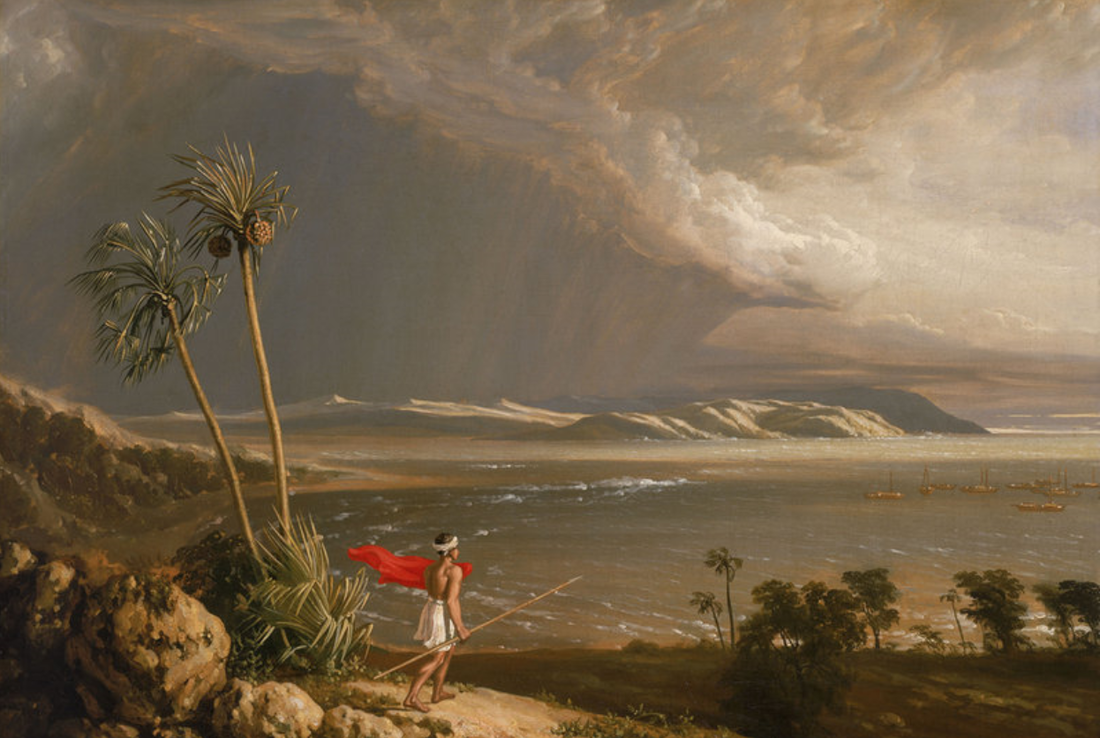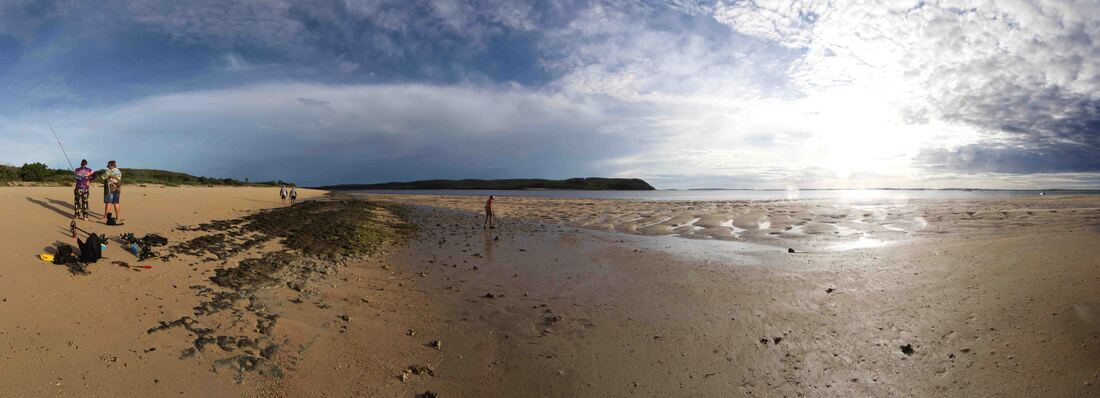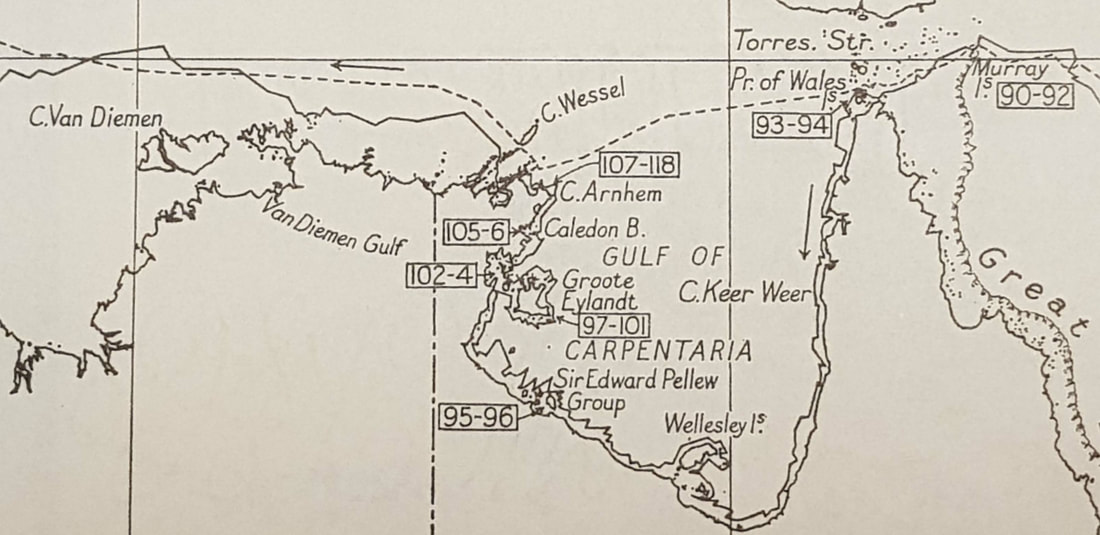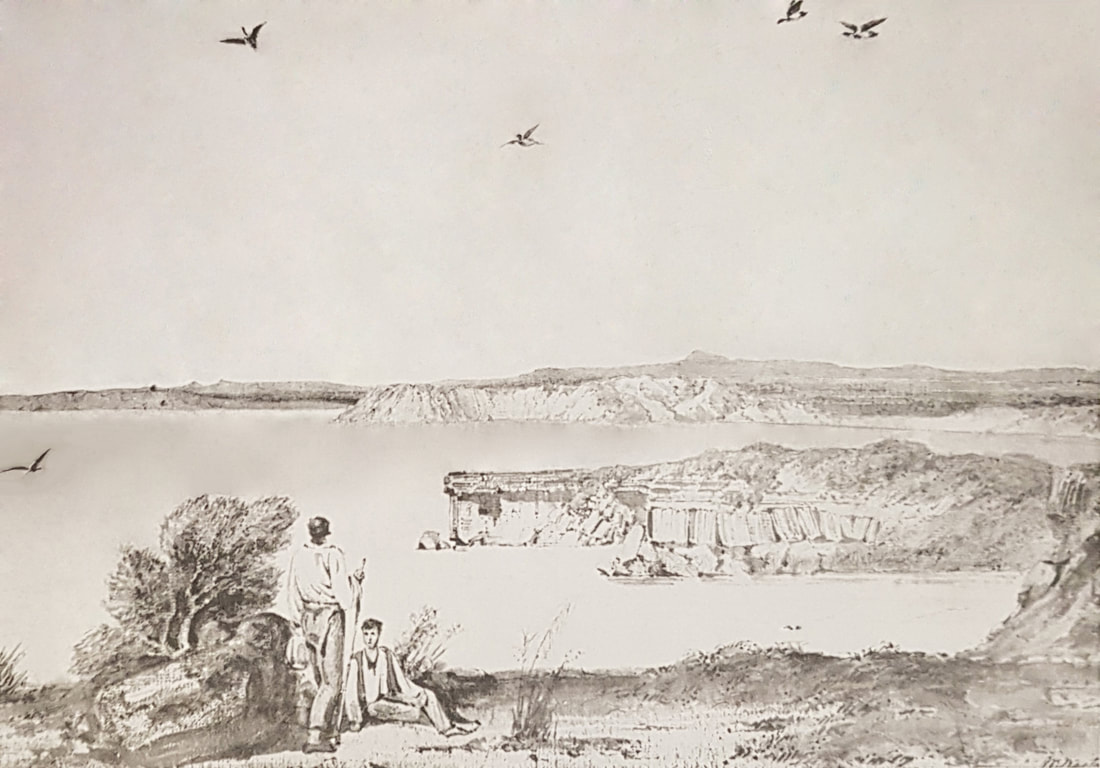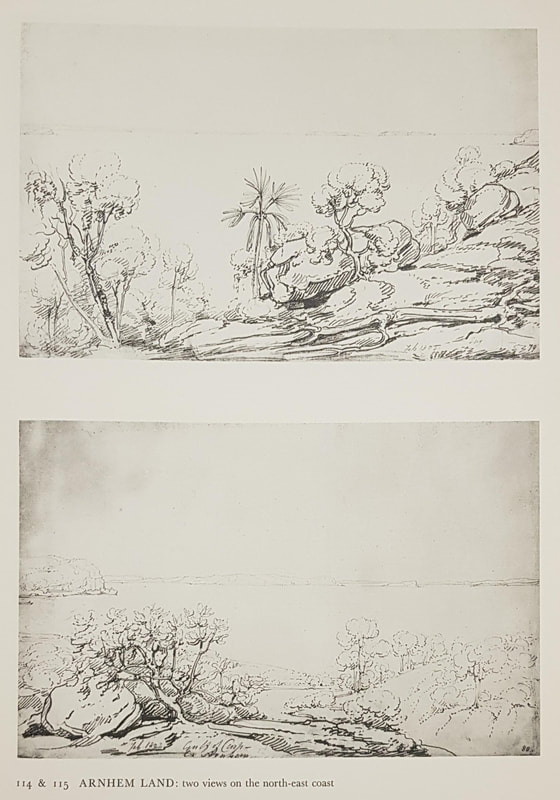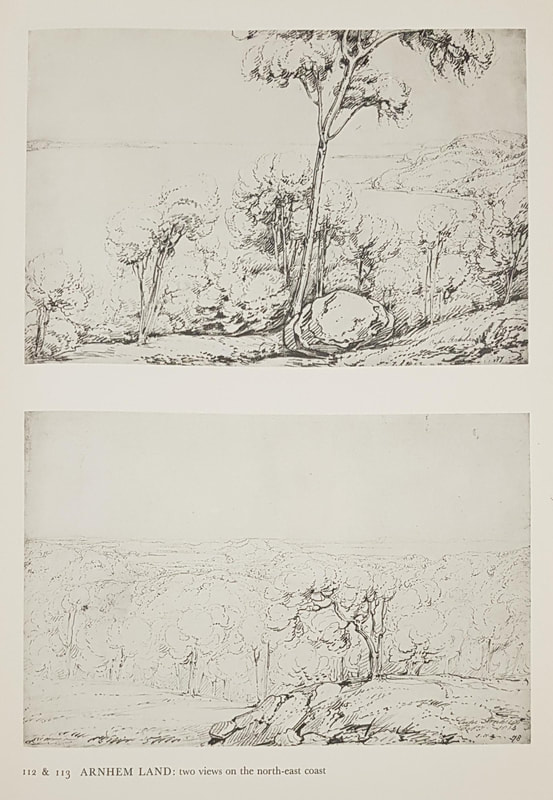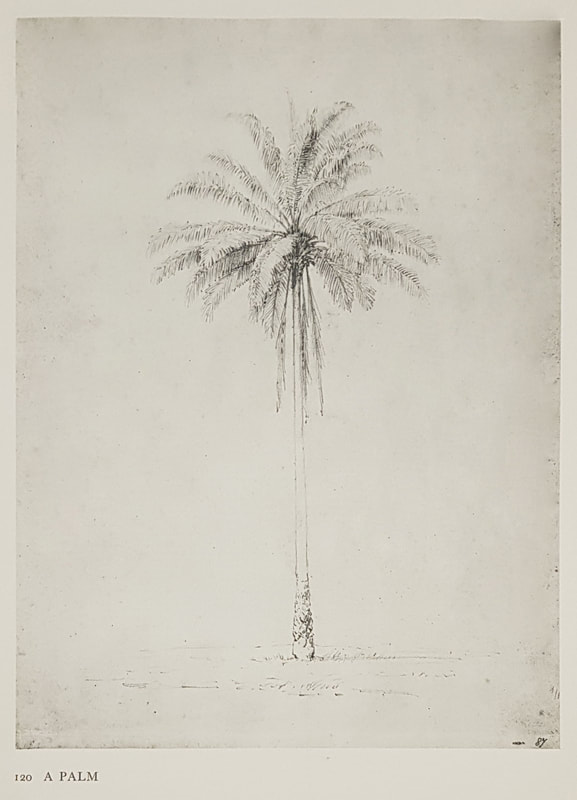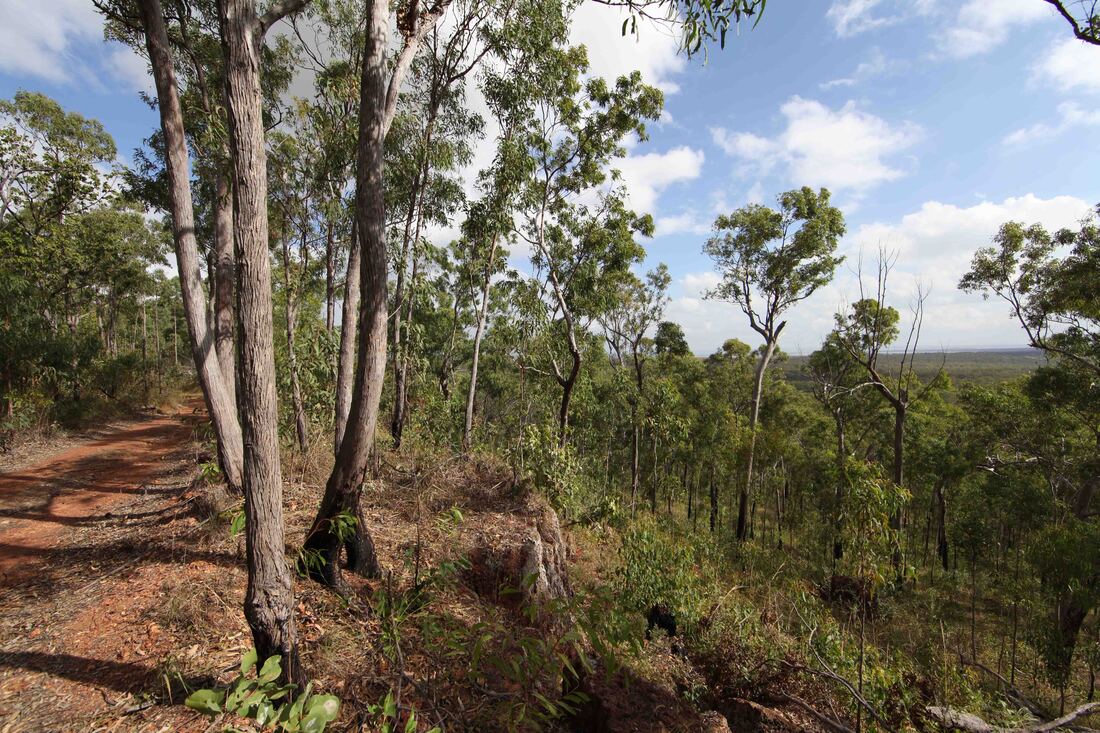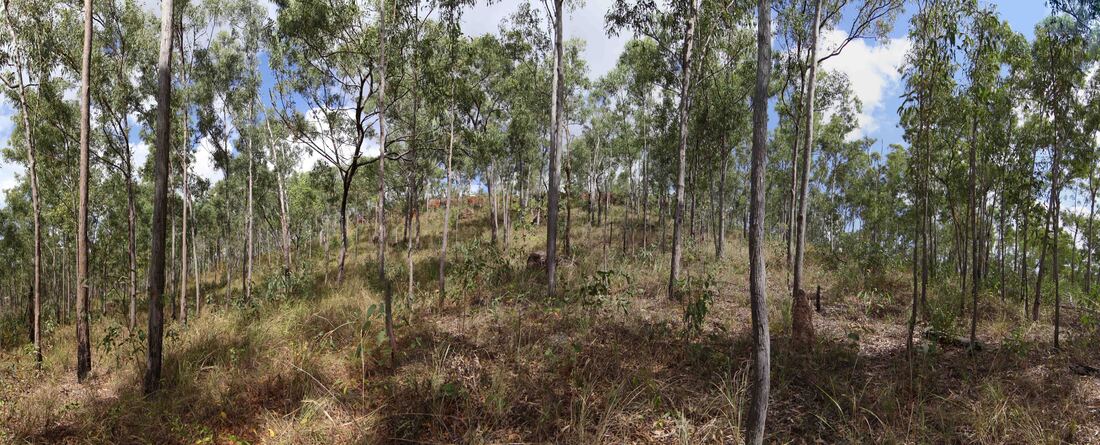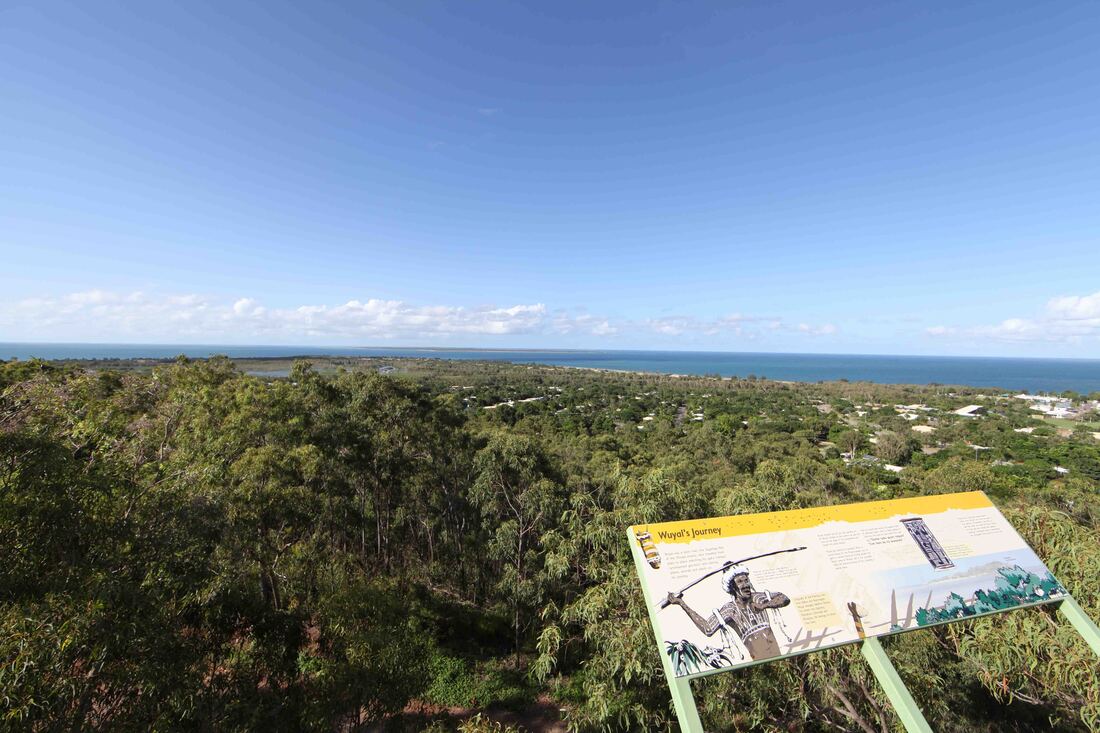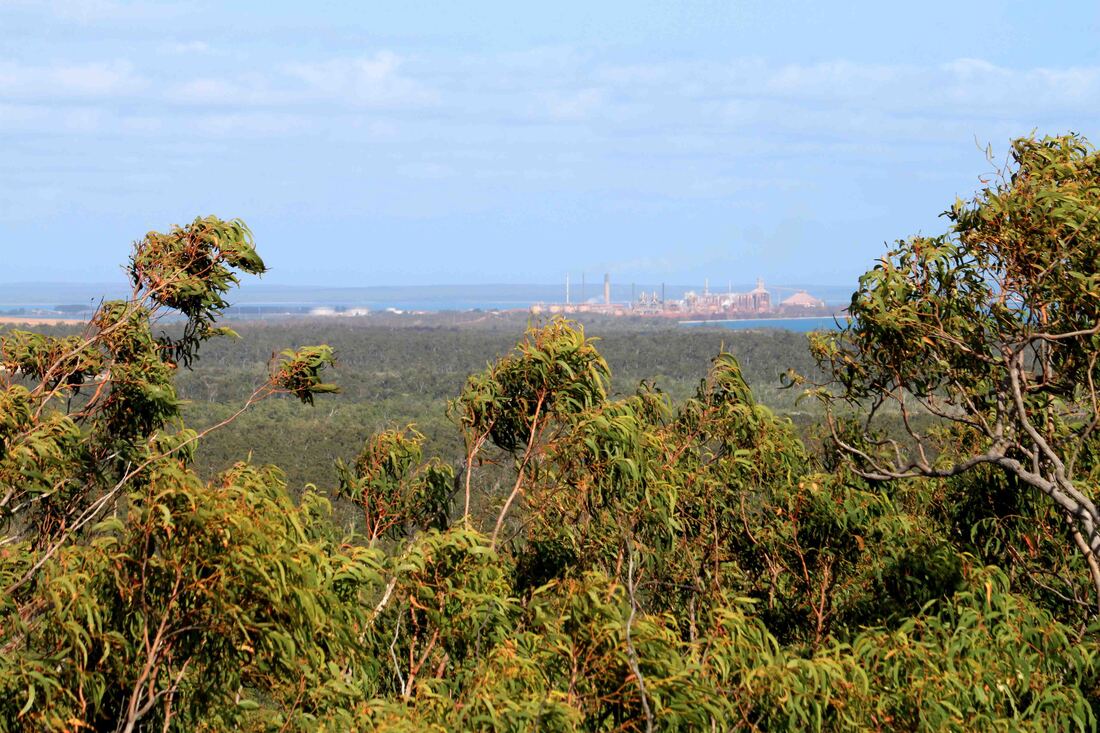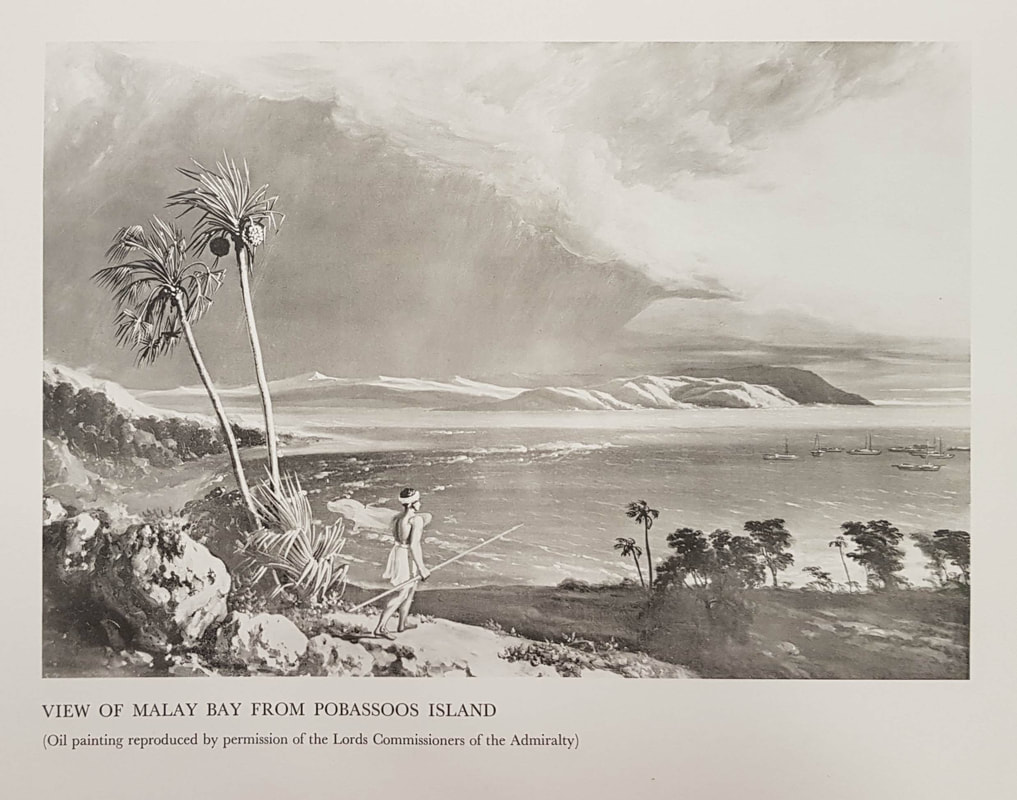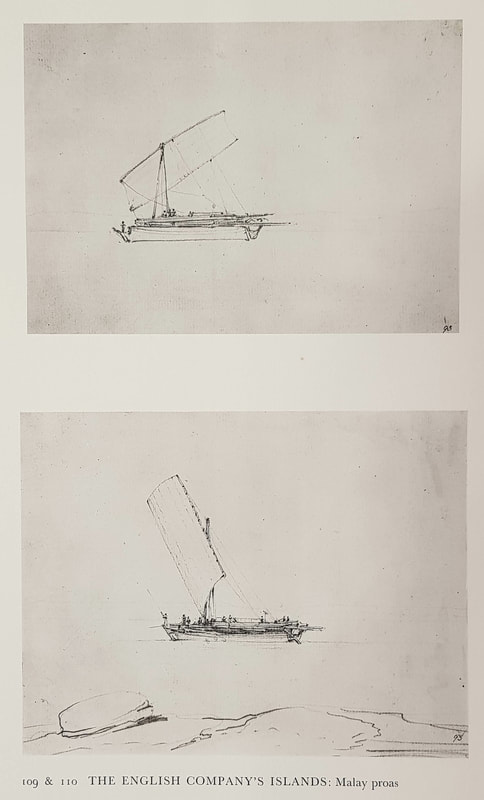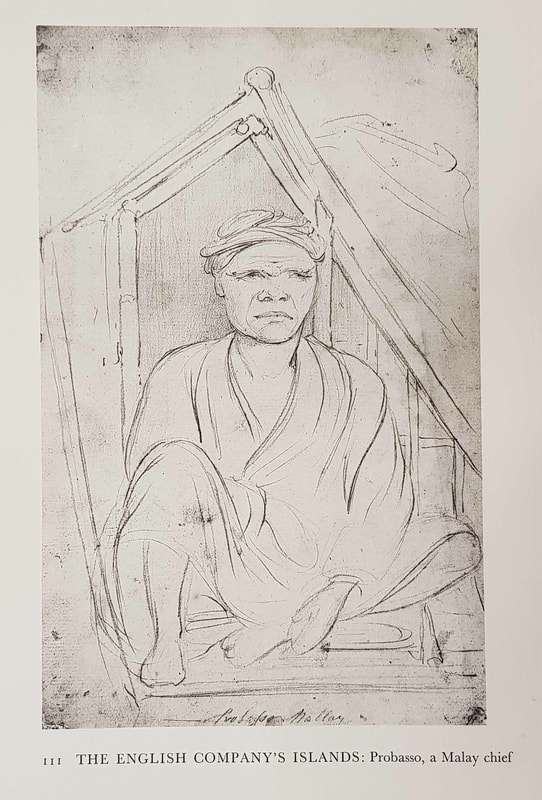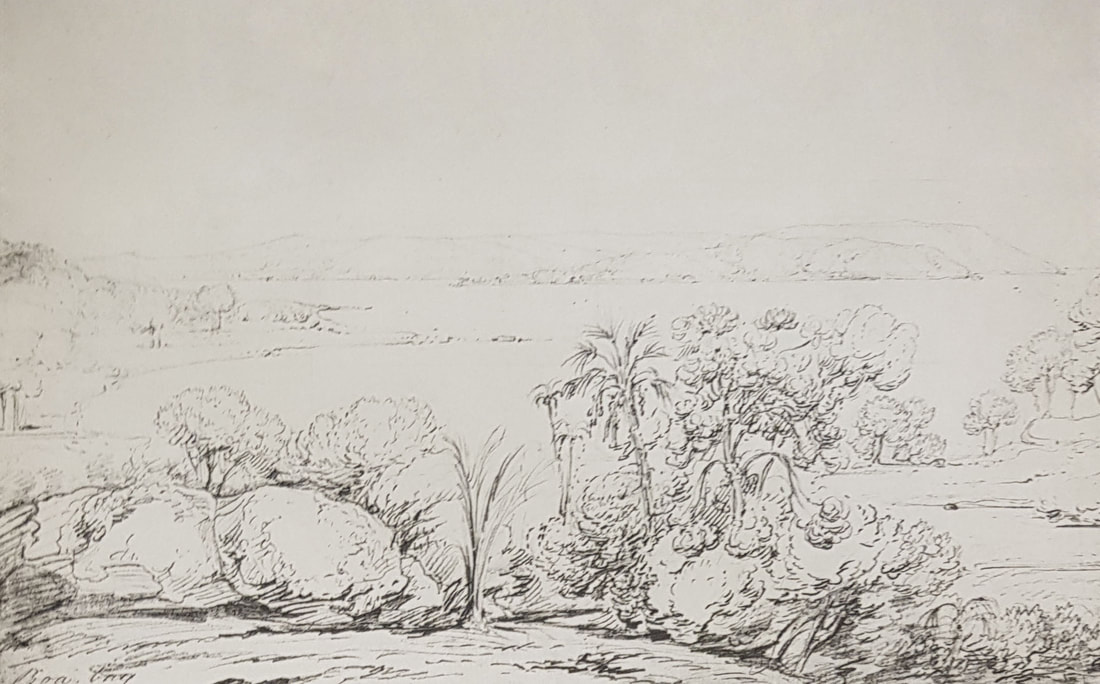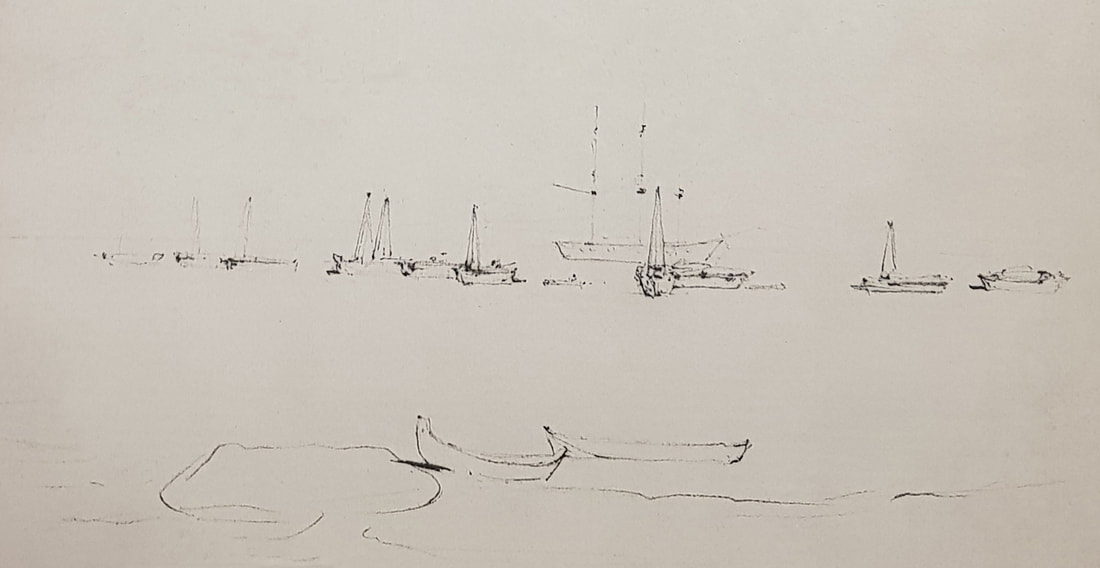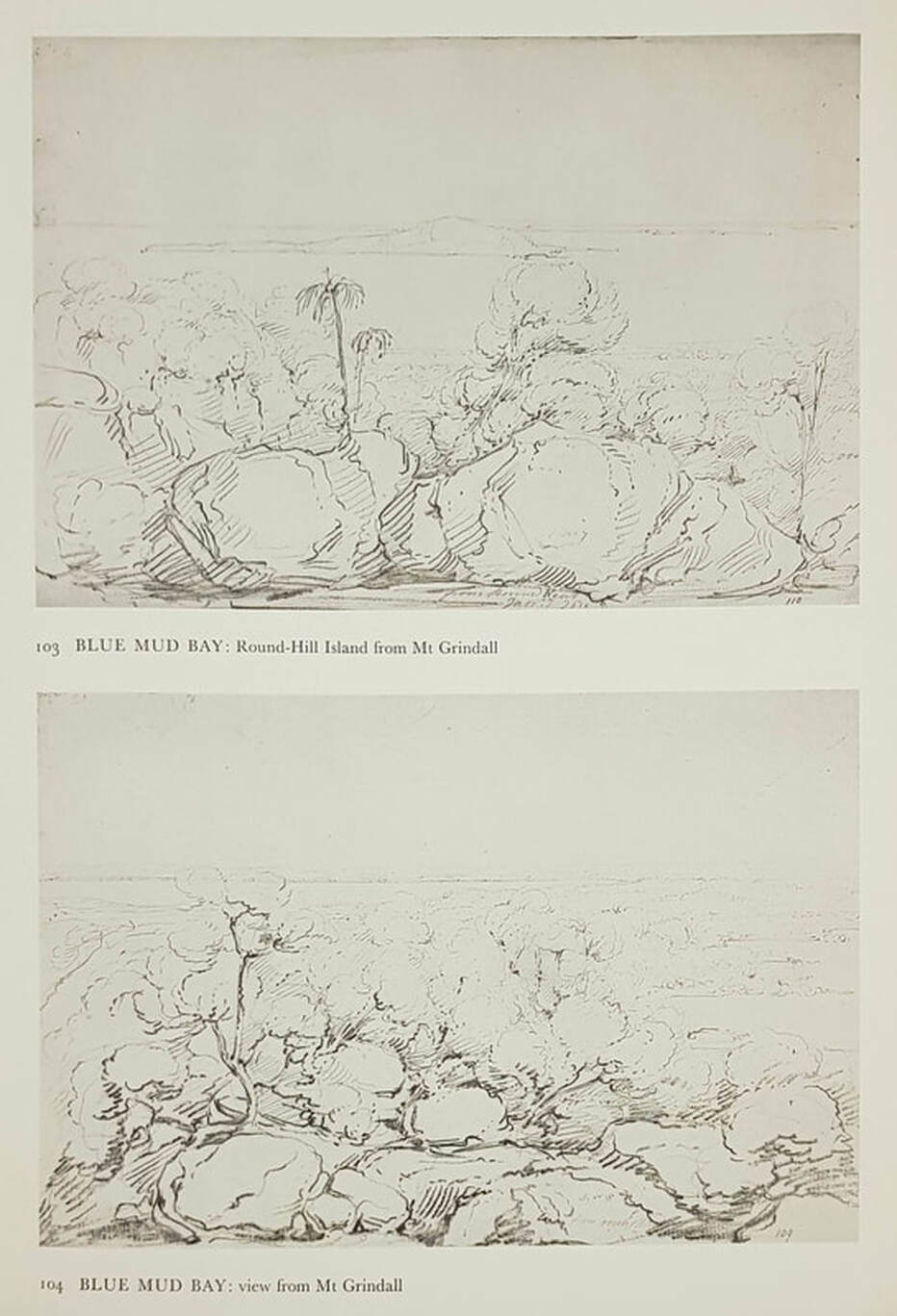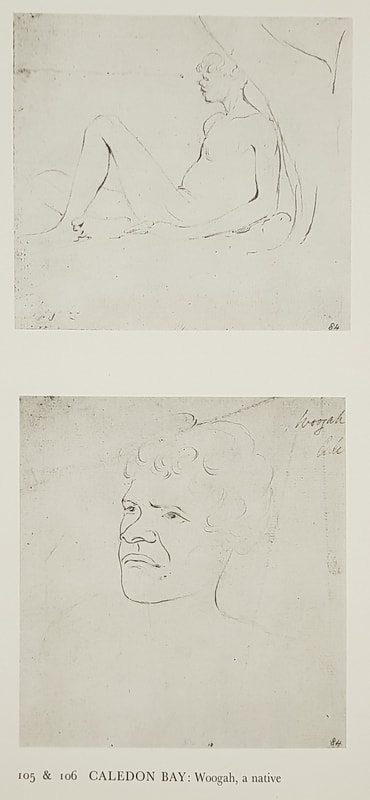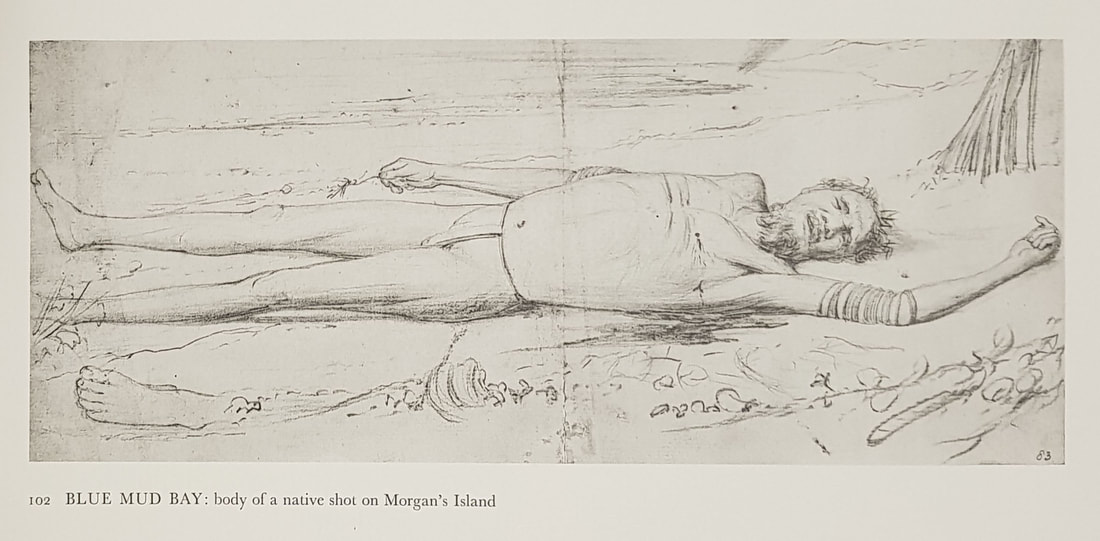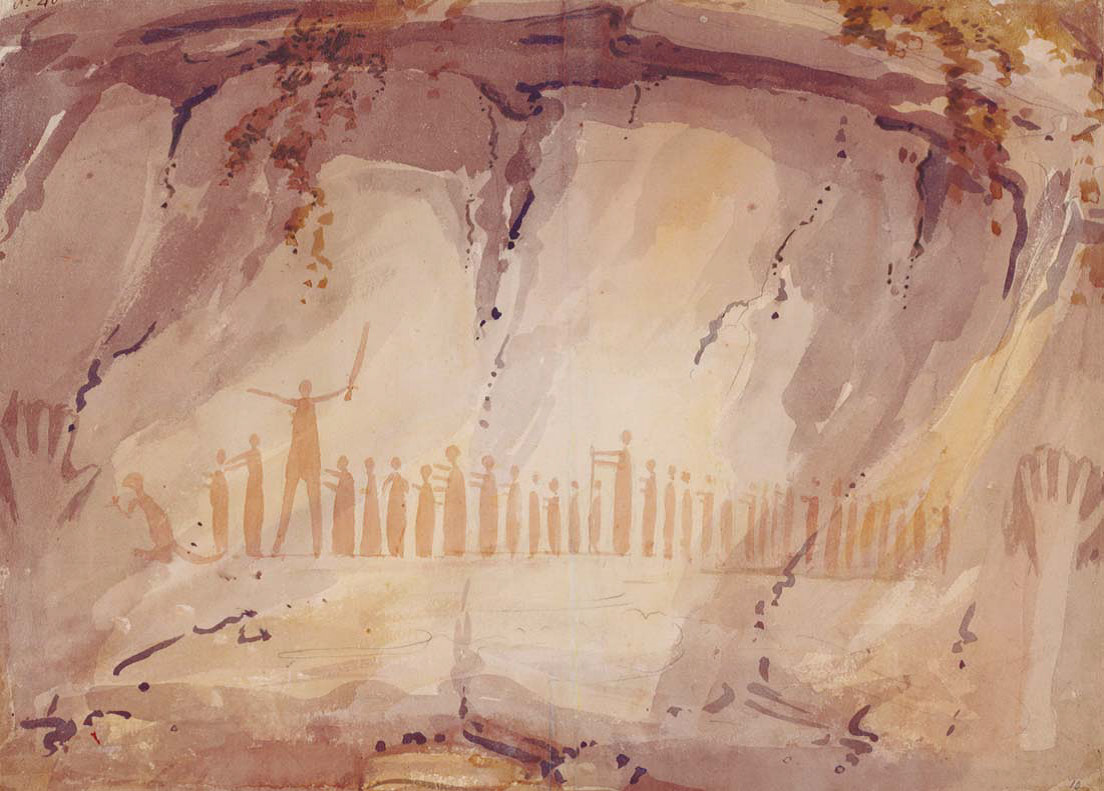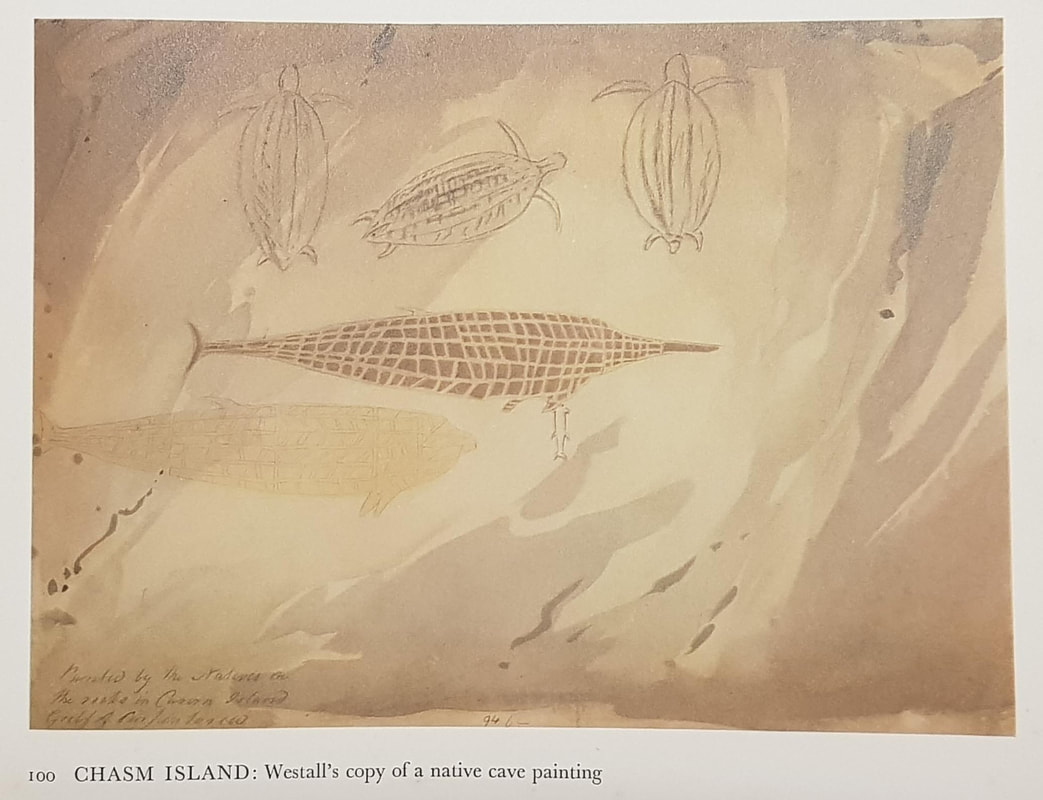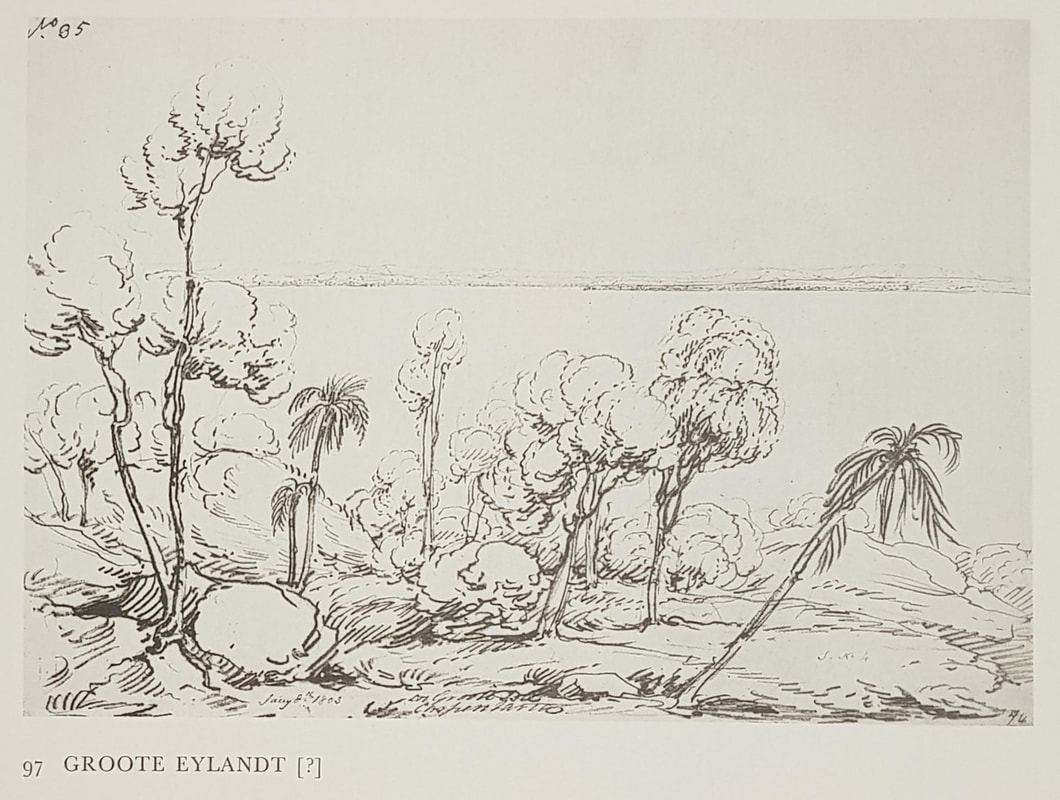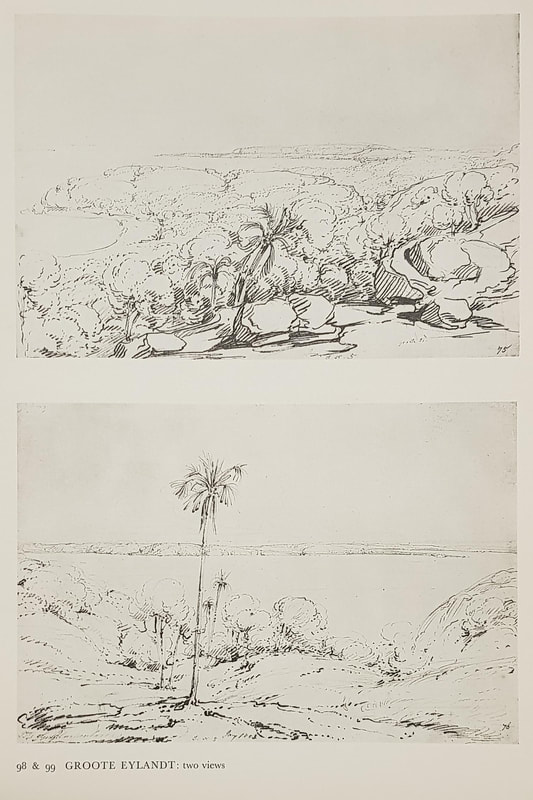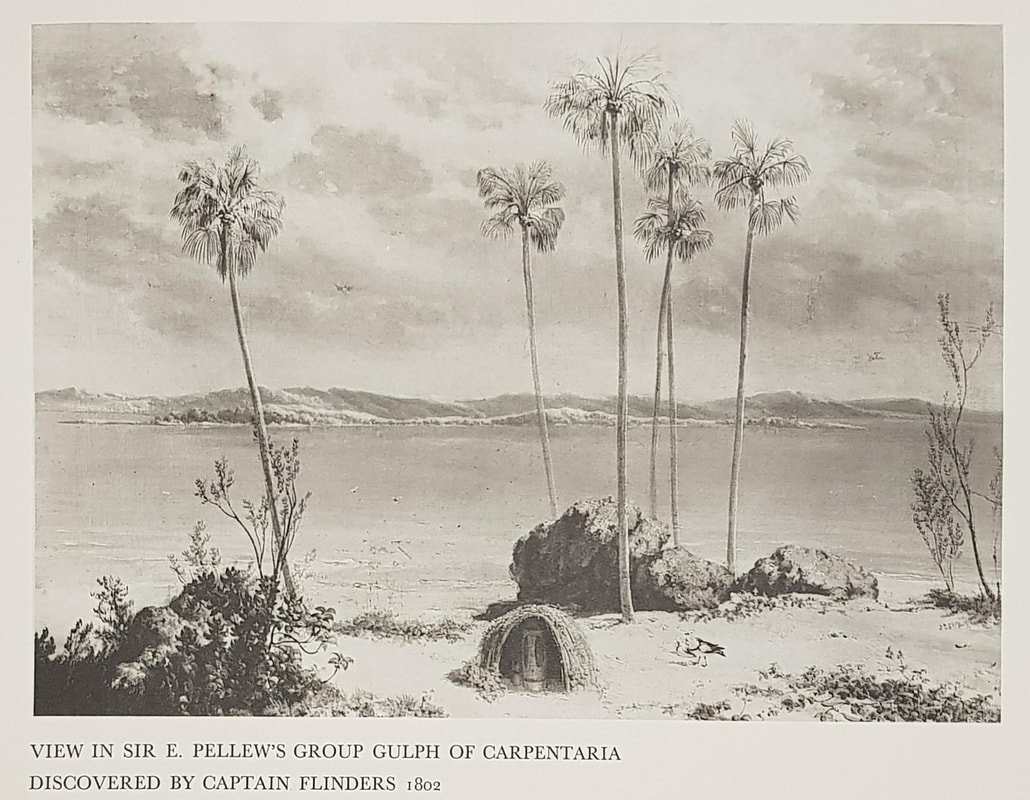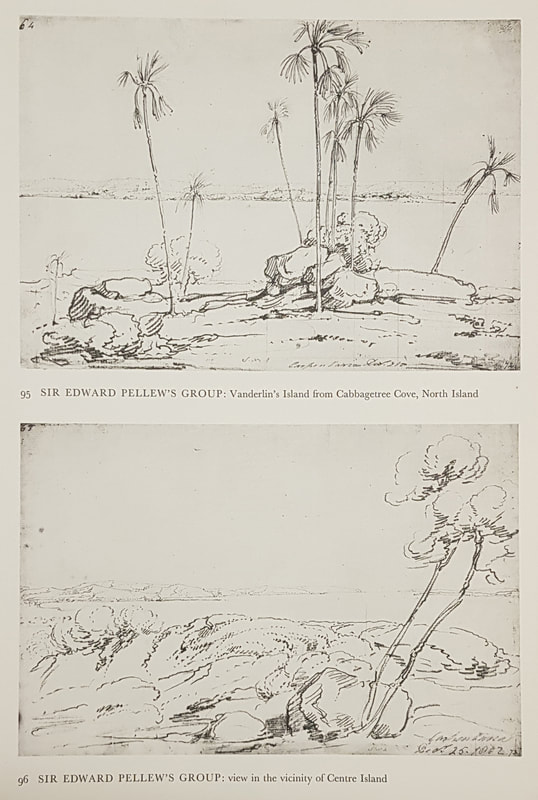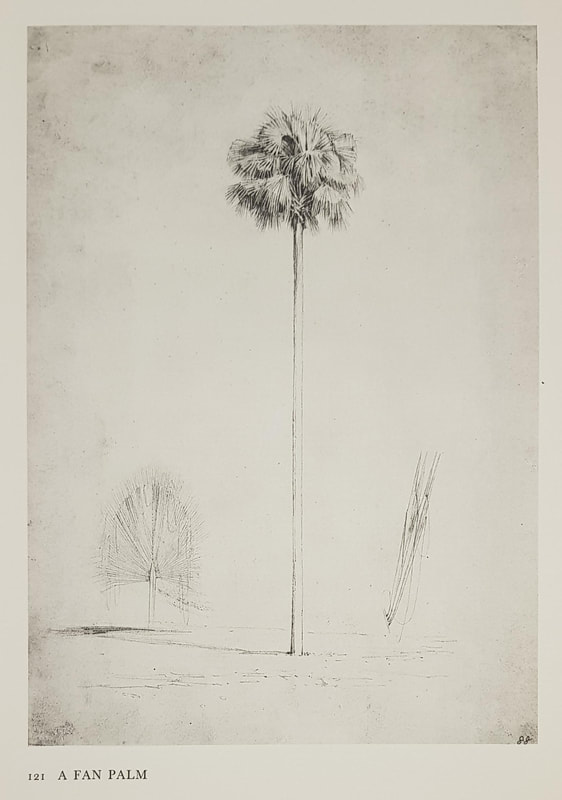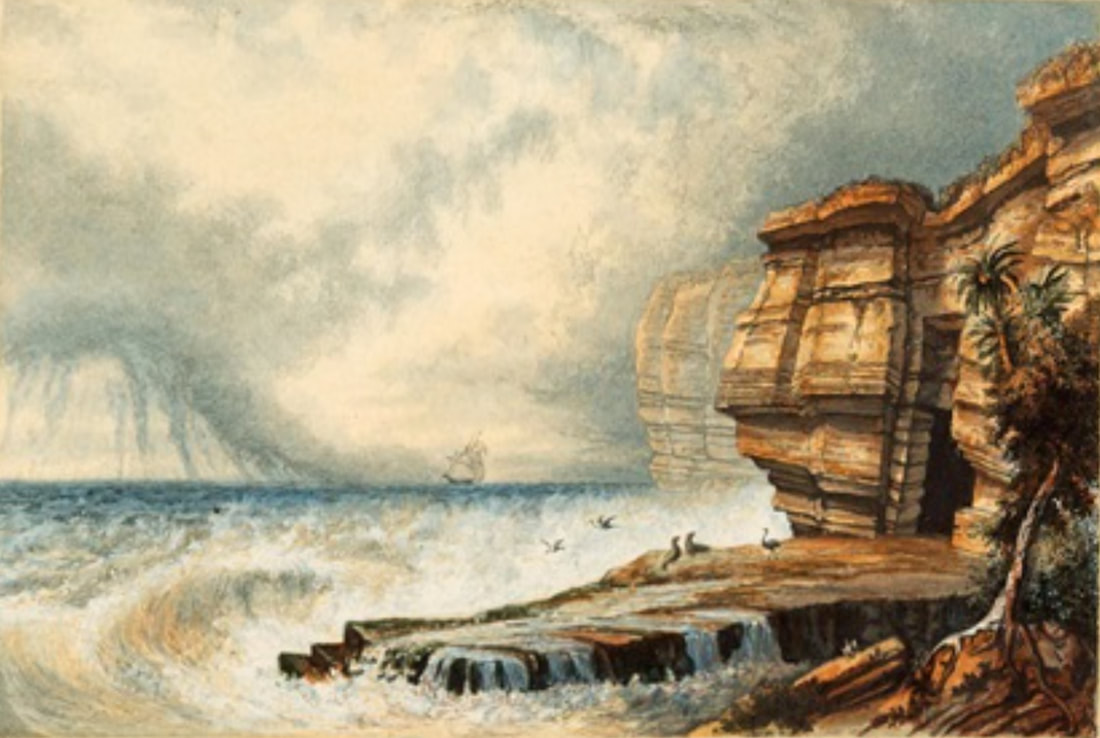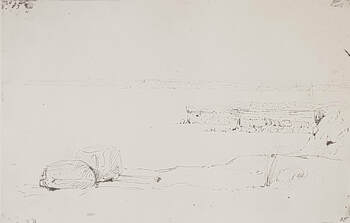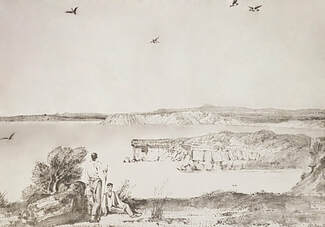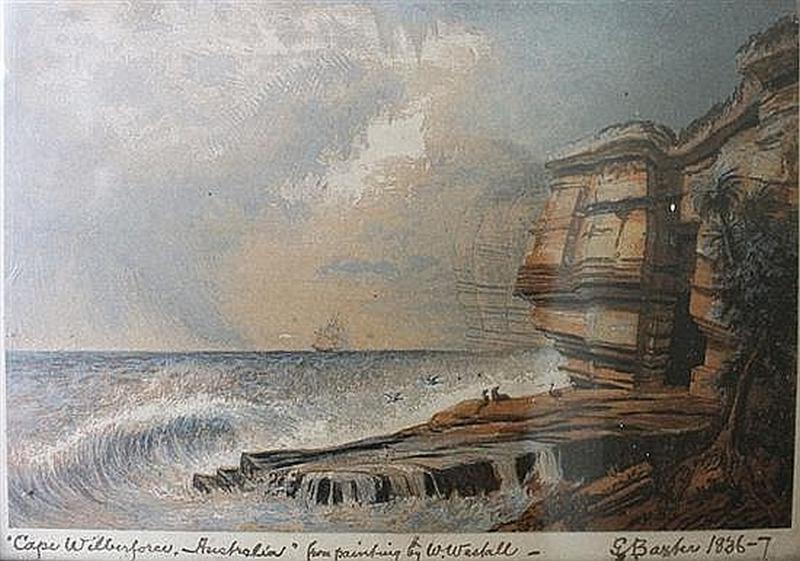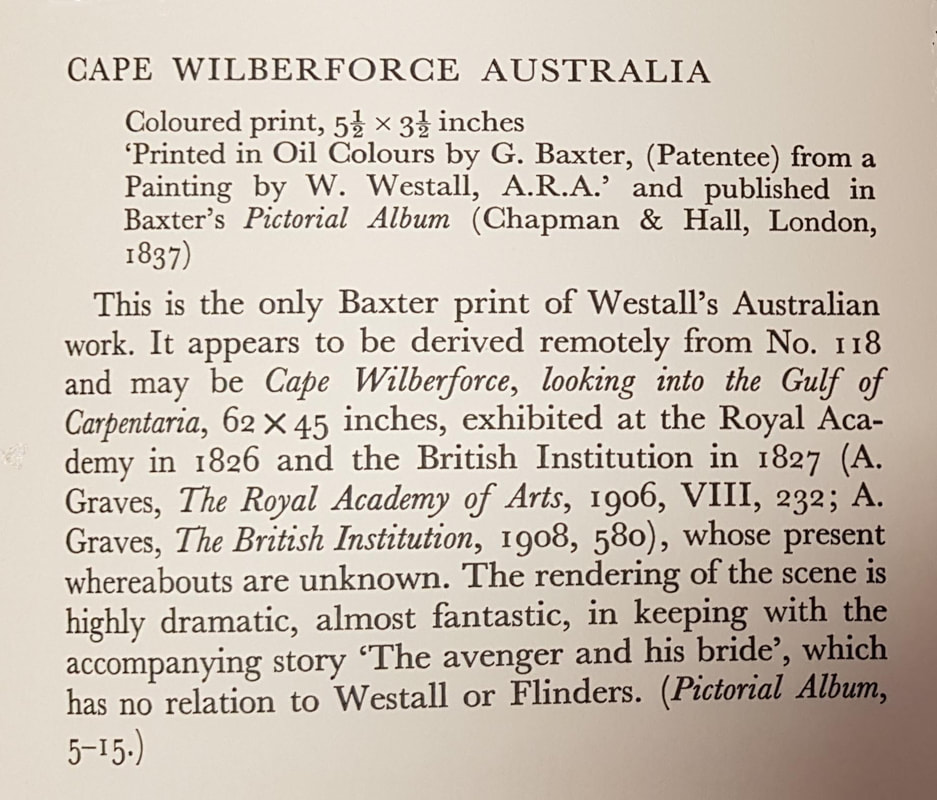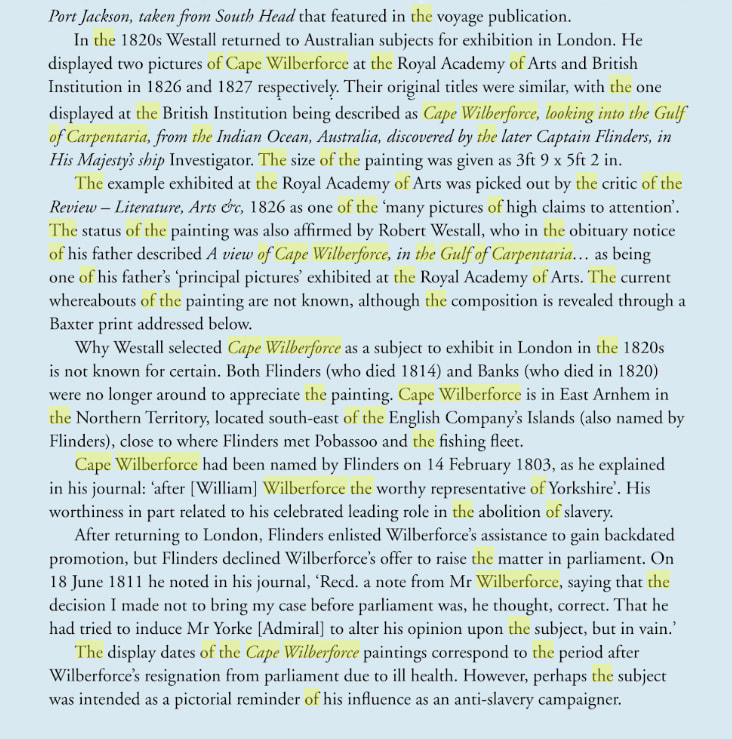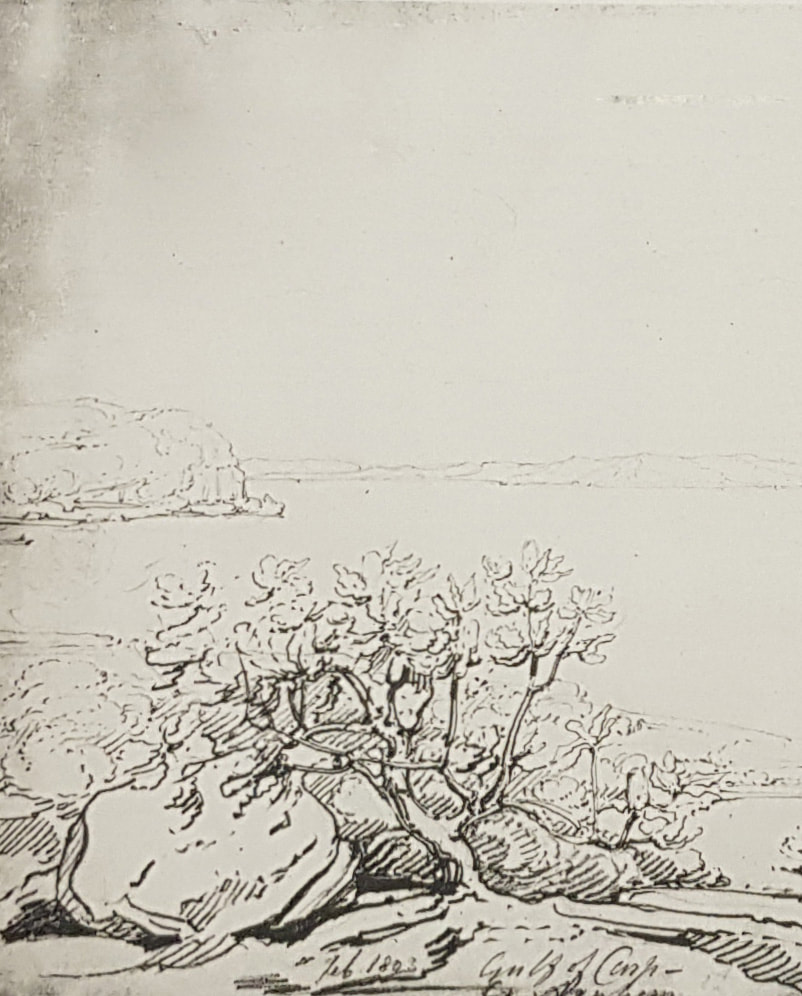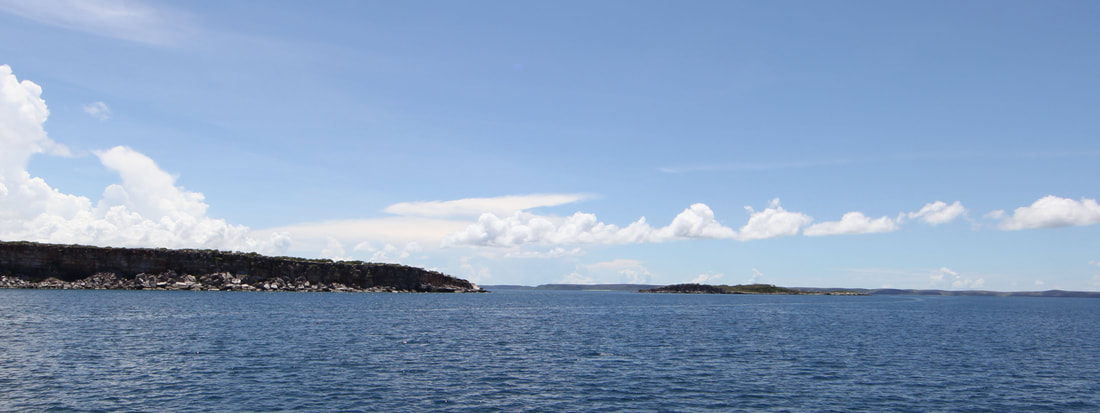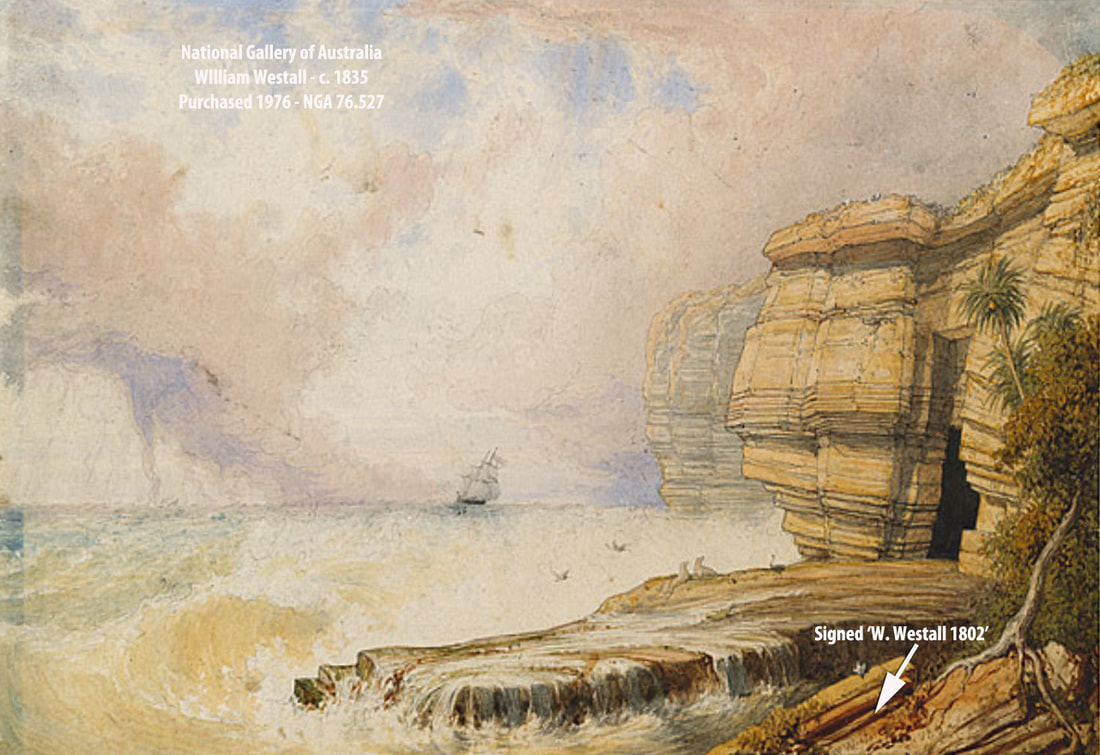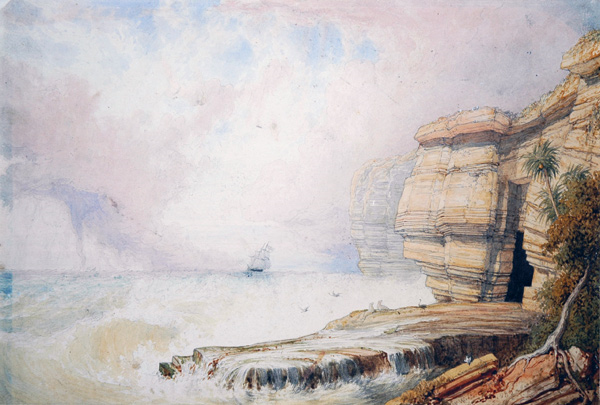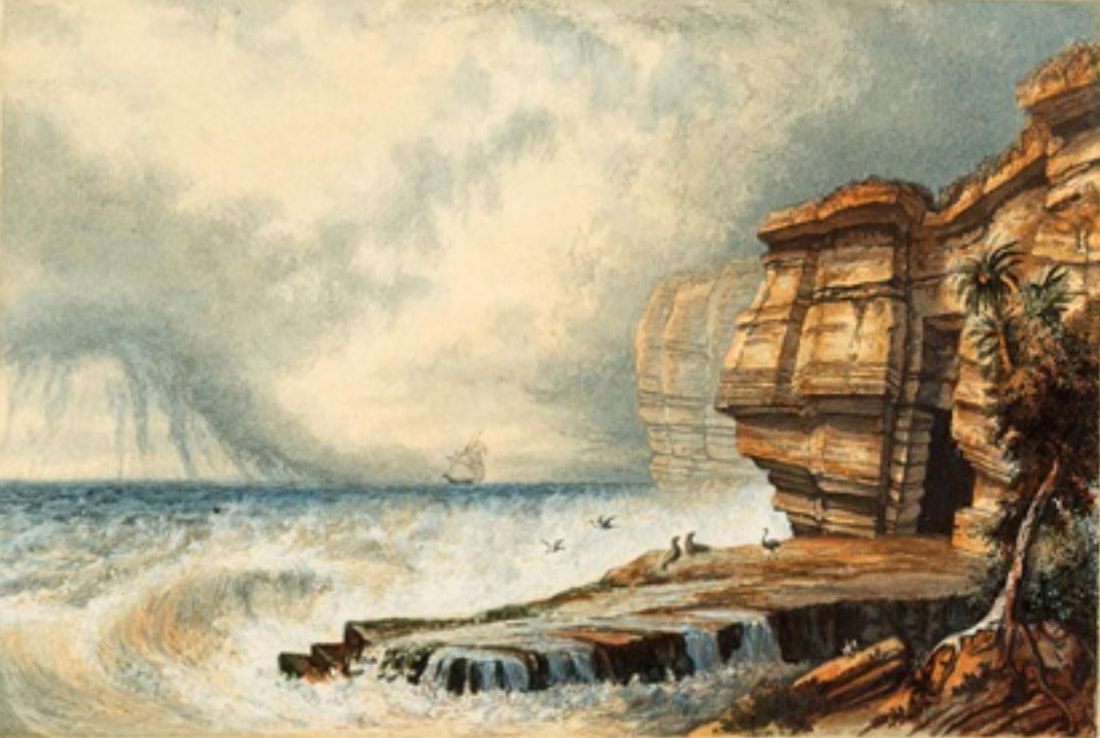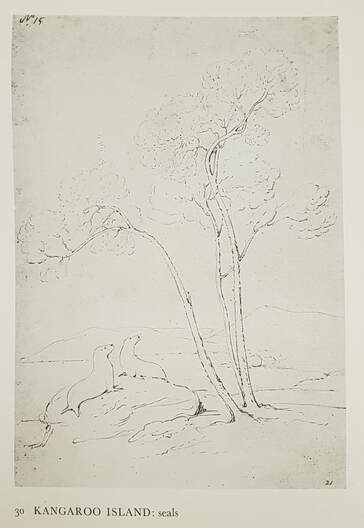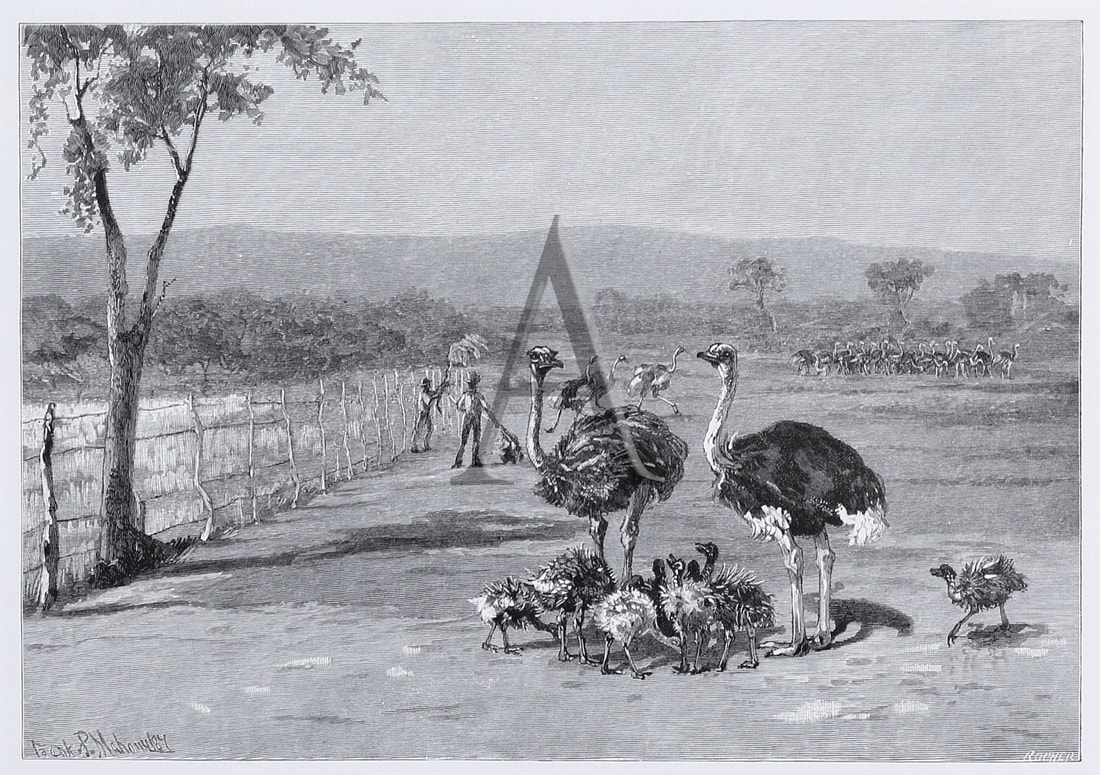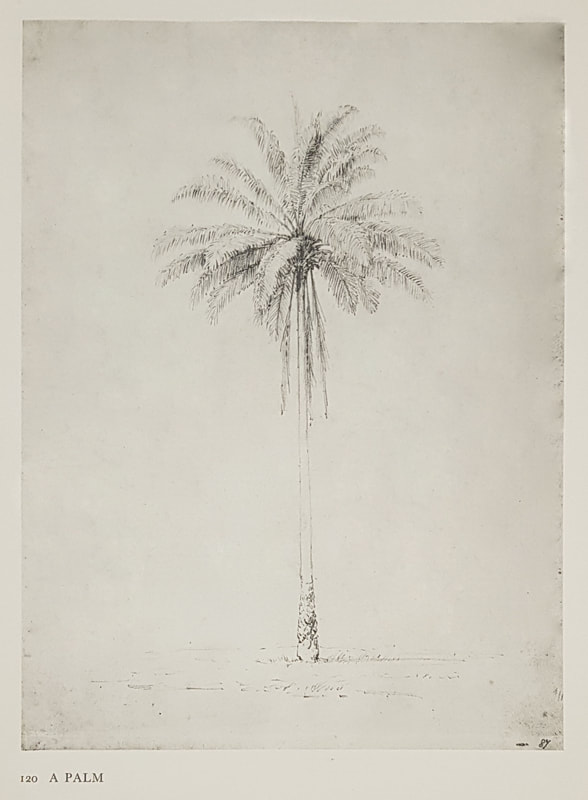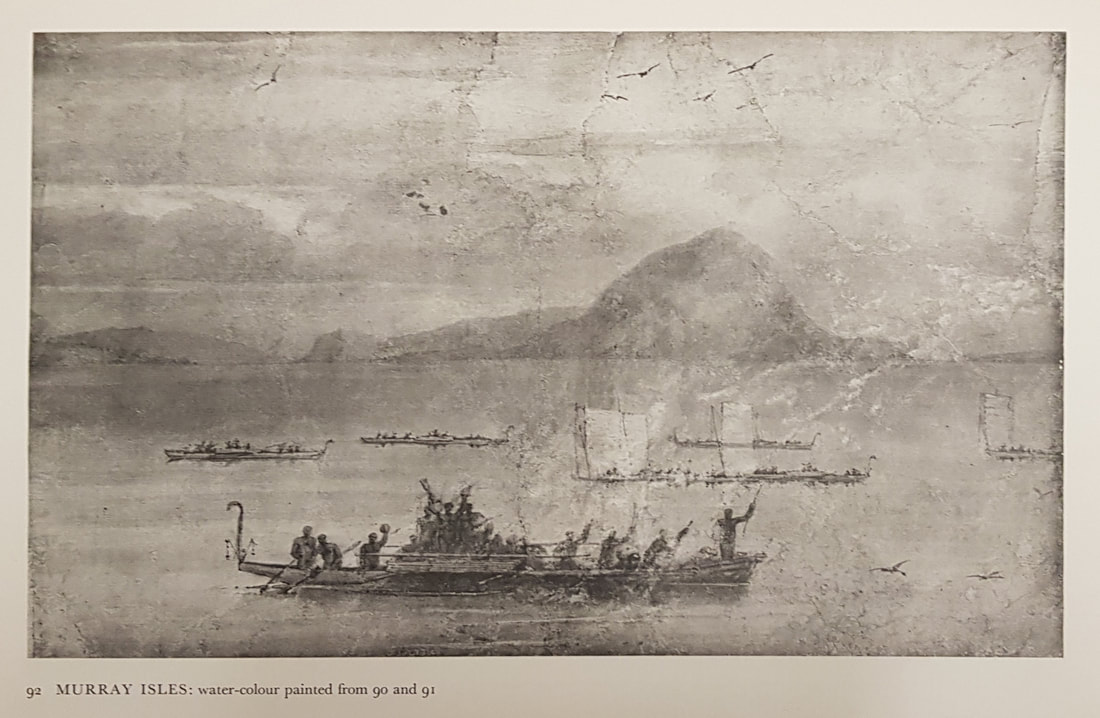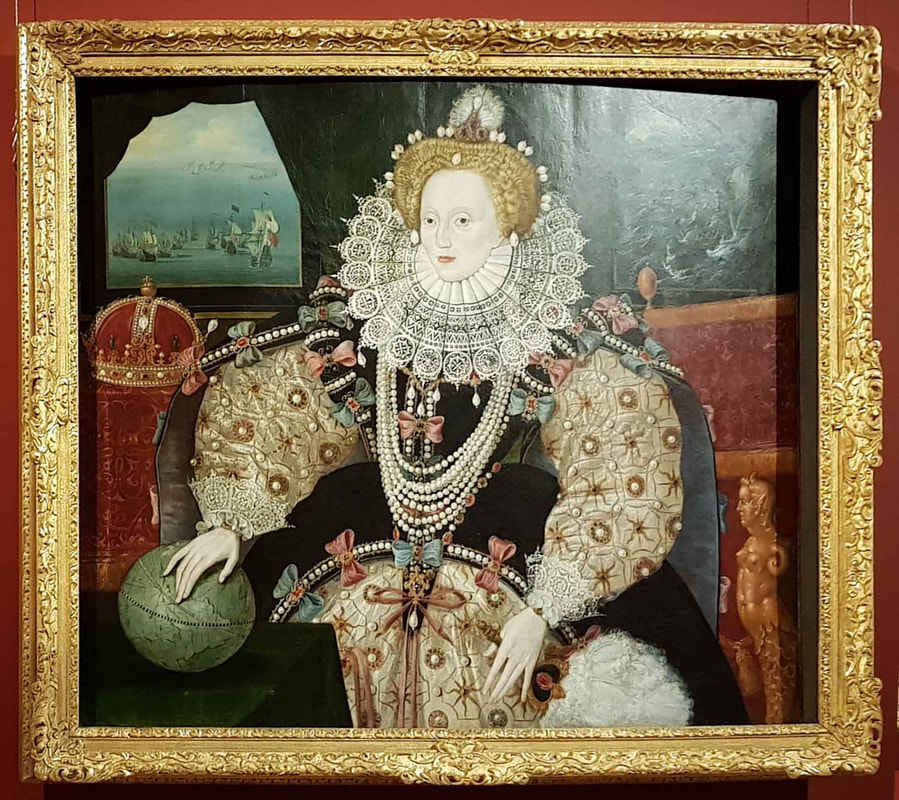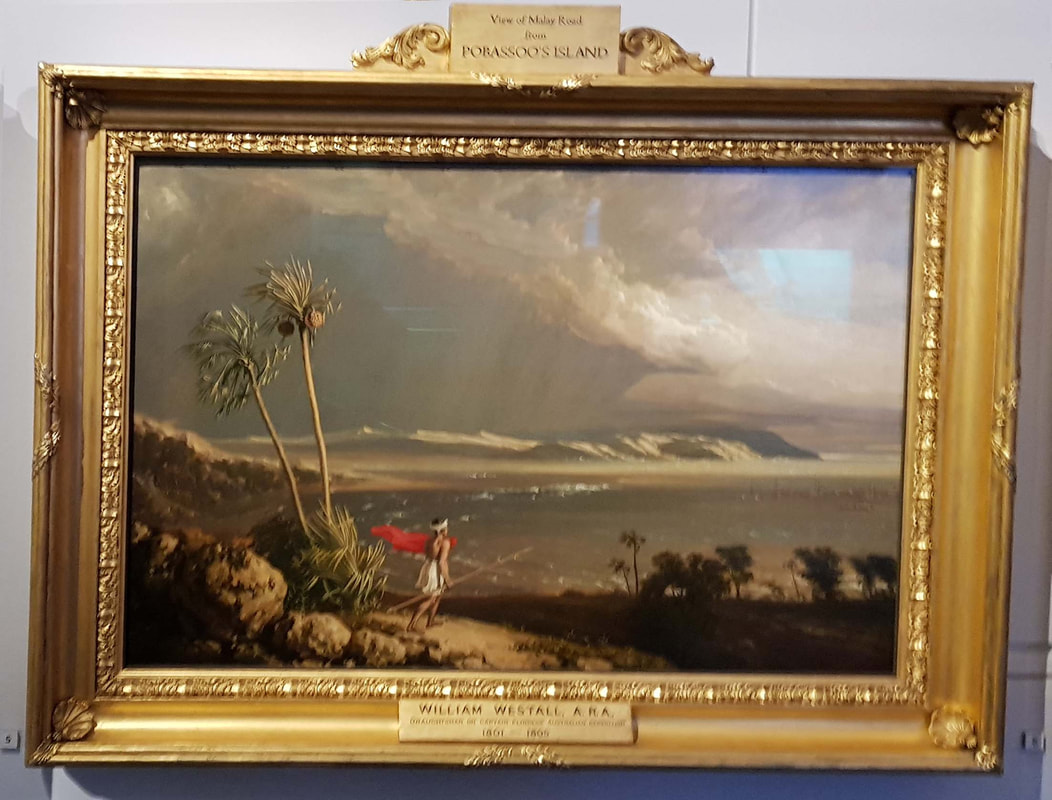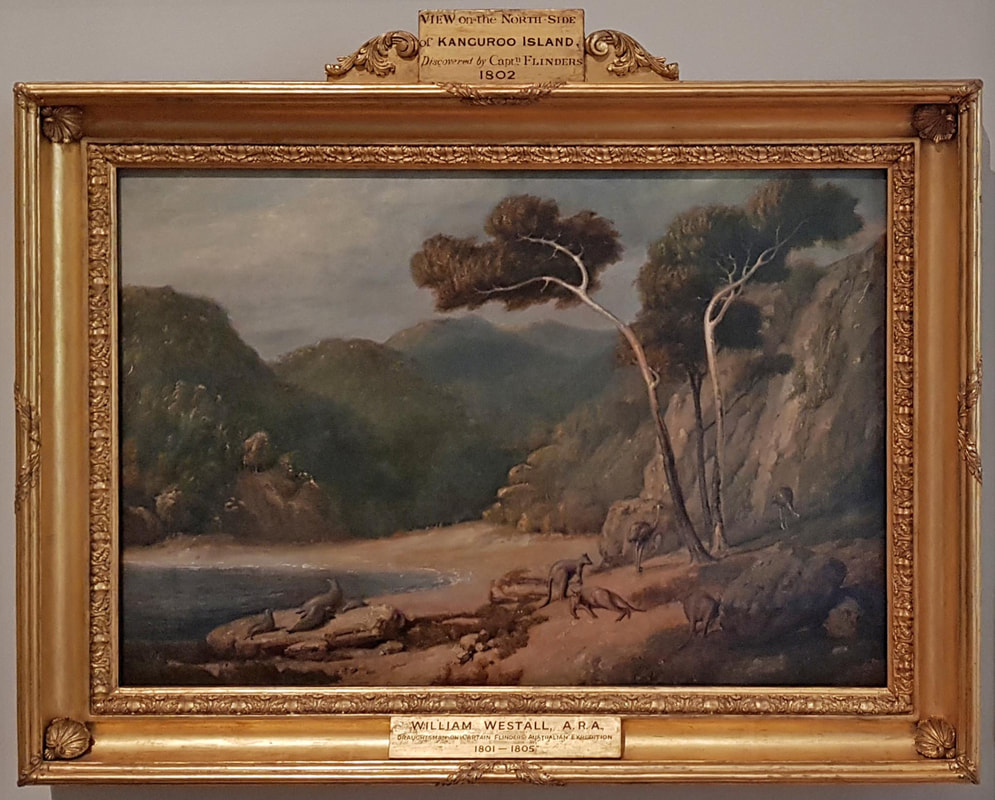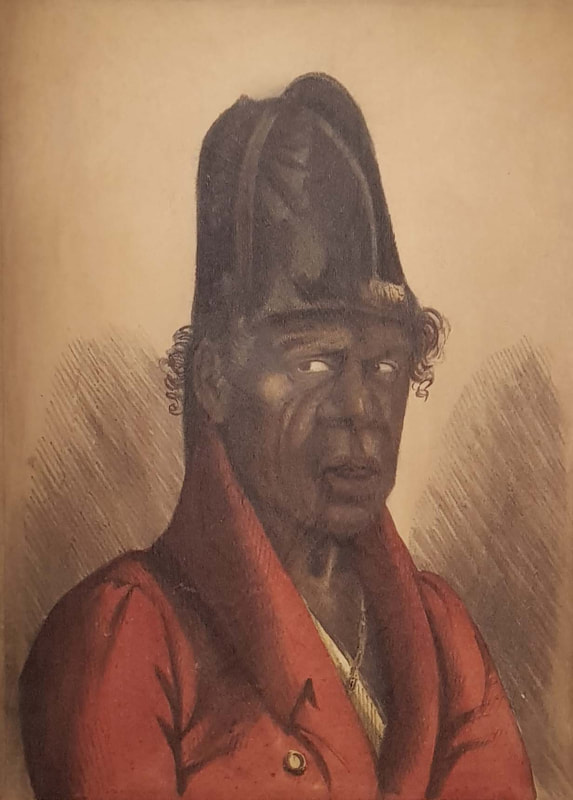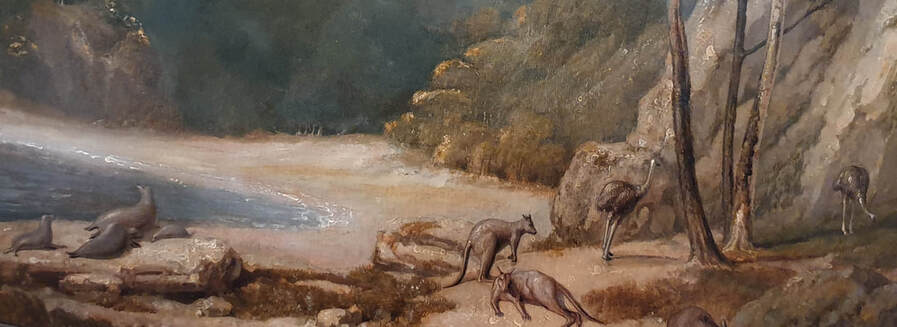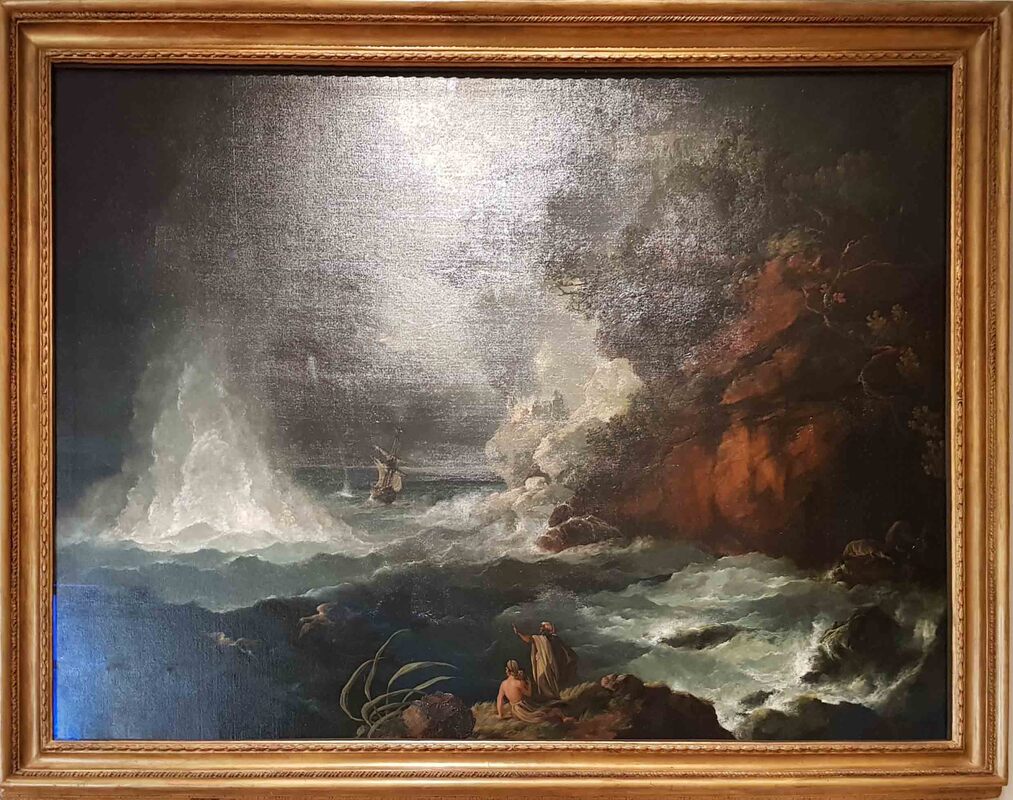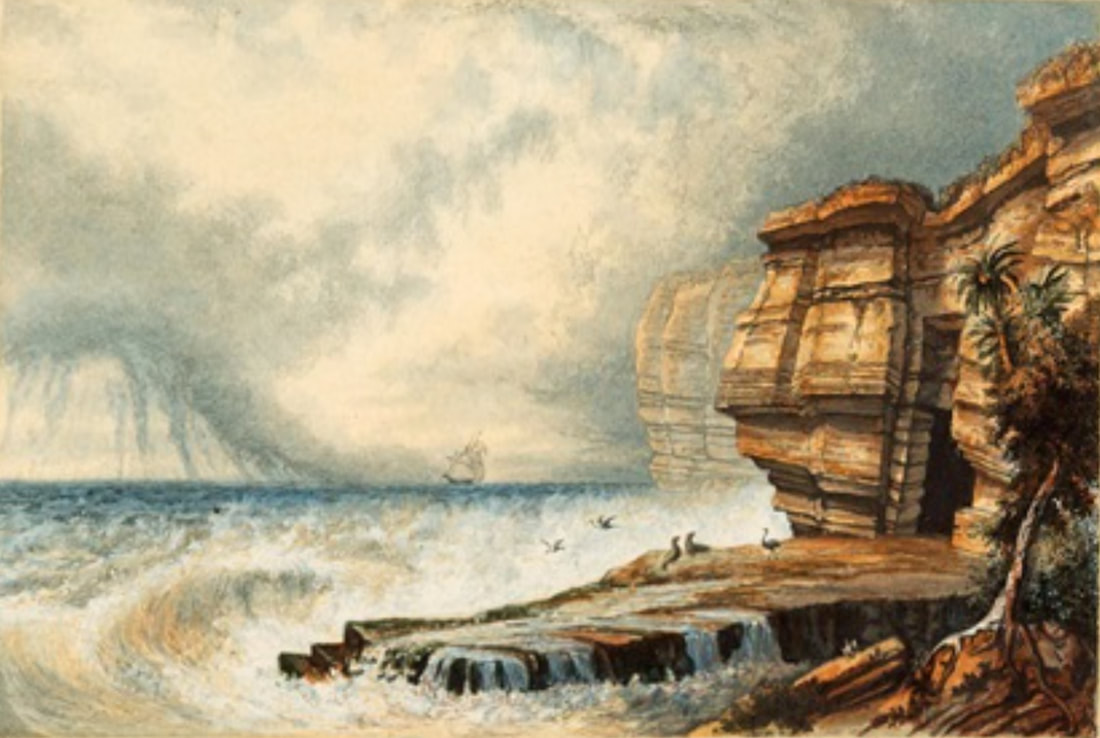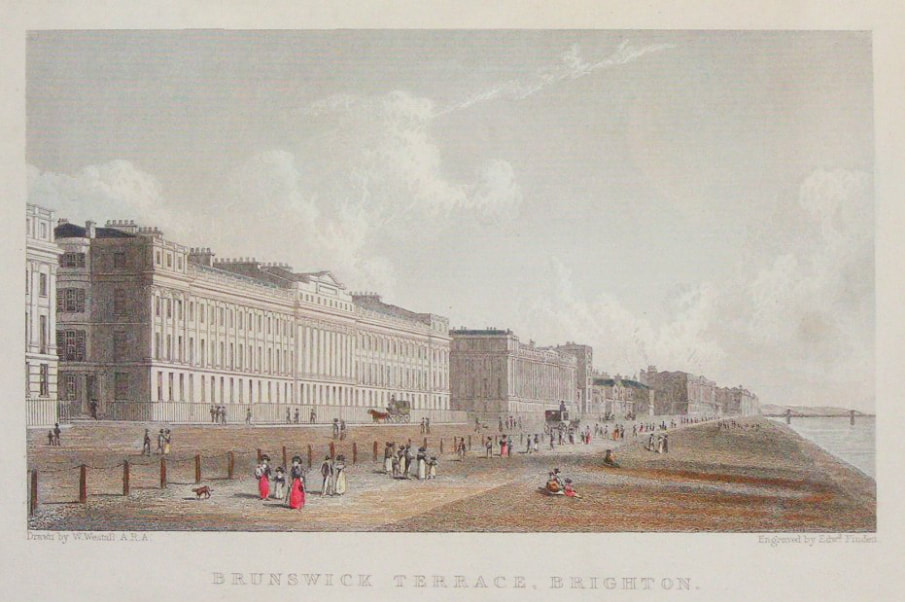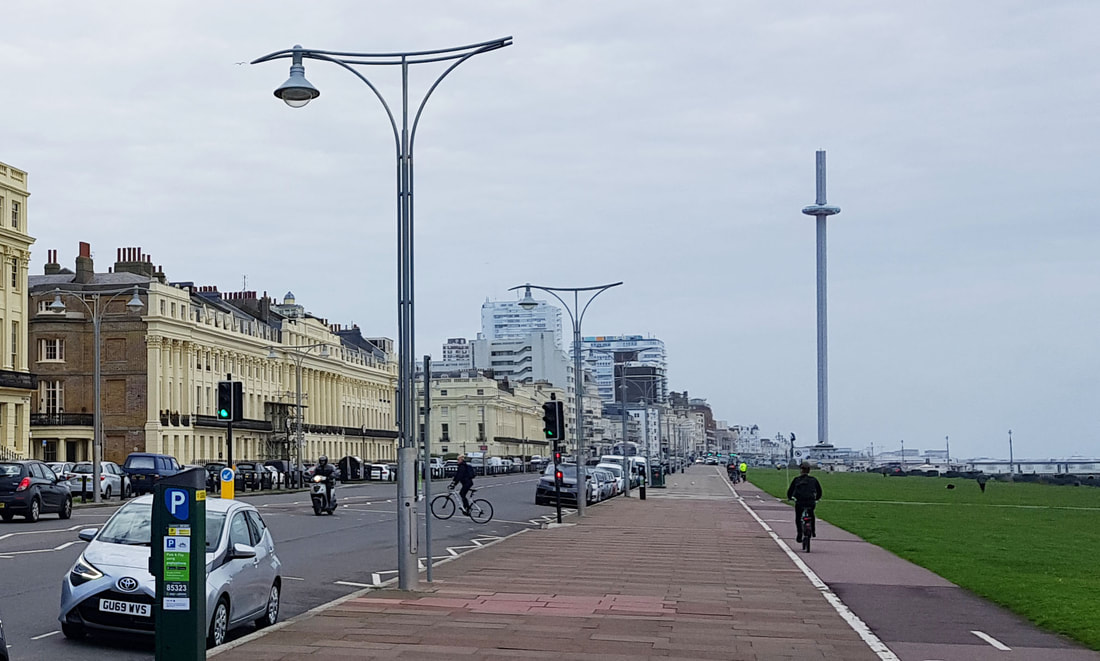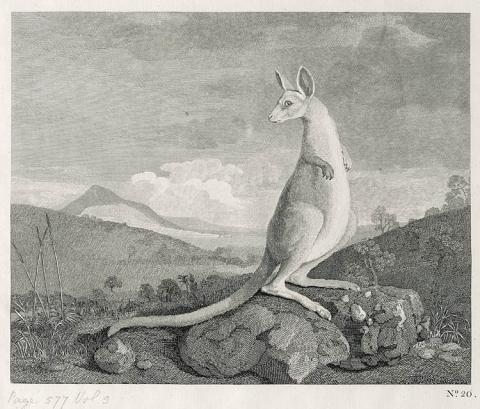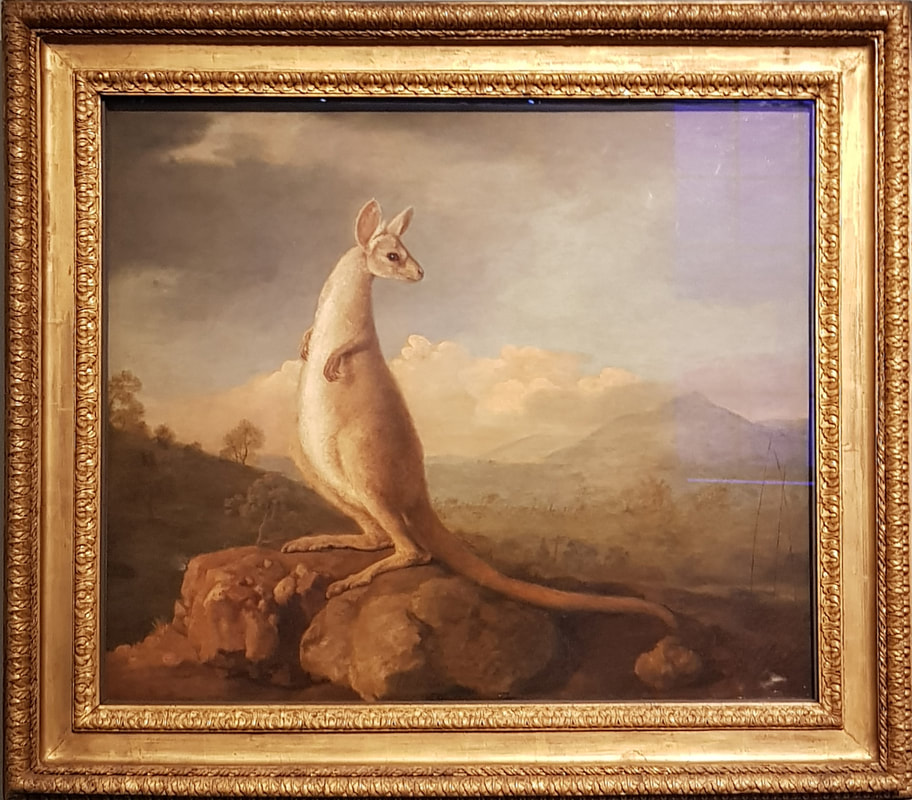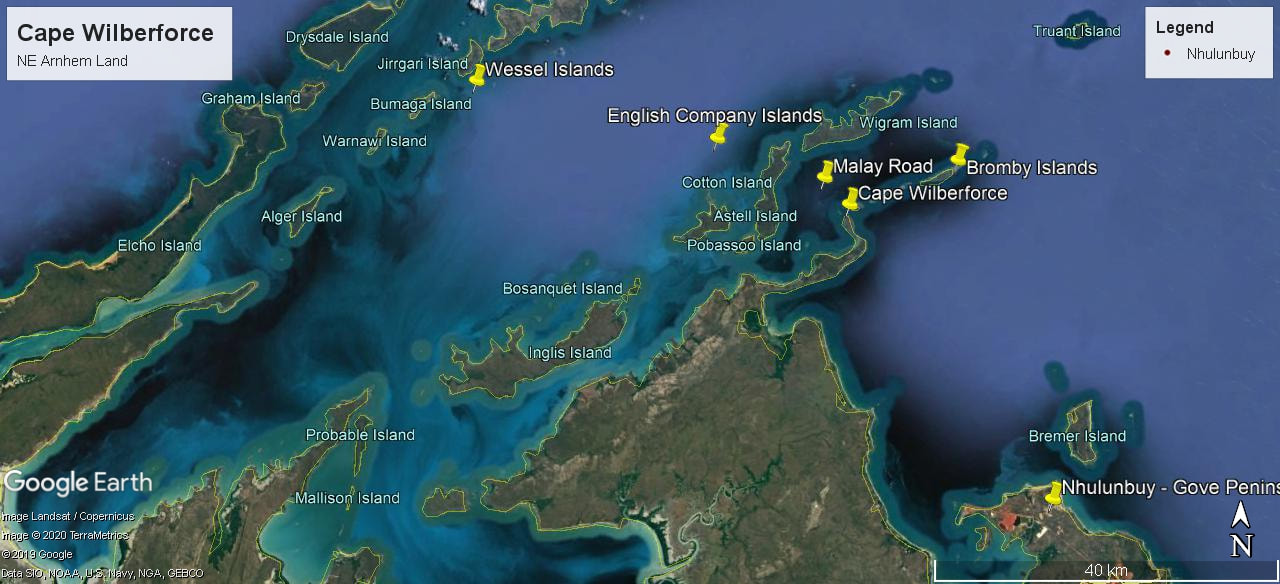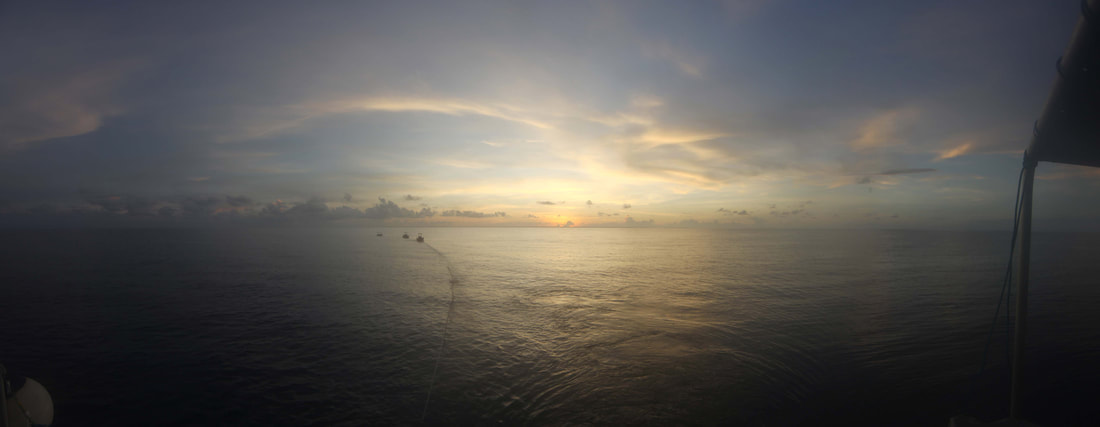WILLIAM WESTALL 1781 - 1850
Westall was the Landscape Artist aboard H.M.S. Investigator during the circumnavigation of Australia by Captain Matthew Flinders R.N. 1801-1803
The purpose of this page is to gather together all Westall's Australia as a basis for research, analysis & pleasure. He deserves a prominence in Australiana so his canon needs proofing. When Westall's work was sought in the National Gallery of Australia the lady at Reception asked if he was a member.
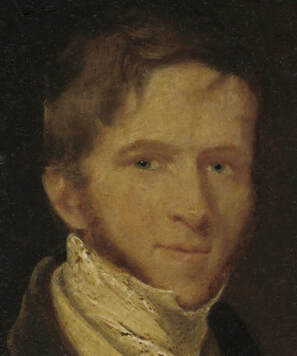 W. Westall self-portrait nla.pic-an7692976
W. Westall self-portrait nla.pic-an7692976
Westall, William (1781–1850) landscape artist, was born on 12 October 1781 at Hertford, England, the son of Benjamin Westall (1737-1793) and his second wife, Martha Harbord. He was taught to draw by his elder half-brother Richard (1765-1836), a water-colour painter, Royal Academician & painting teacher to Princess Victoria.
In 1799 he was admitted to the Royal Academy School, where he was studying when at 19 he was appointed landscape artist with Matthew Flinders' Investigator expedition to Australia, at a salary of 300 guineas. During the voyage he made a large number of pencil-and-wash landscapes in places visited by the Investigator and a series of coast profiles in pencil. When the Porpoise ran aground on Wreck Reef his sketches were 'wetted and partly destroyed' and, while Westall travelled in China, the drawings, regarded as part of the official record of the voyage, were taken by Lieutenant Robert Fowler to England. There, at the suggestion of Sir Joseph Banks, they were handed to Richard Westall to be 'restored to a proper state'. The library of the Royal Commonwealth Society, London, now holds 139 sheets of these drawings.
After spending some time in China and India Westall returned to London in February 1805; sought access to the sketches to paint a picture for exhibition at the Royal Academy and showed a View of the Bay of Pines at the academy later in the year. In the summer of 1805 Westall went to Madeira and twelve months later to Jamaica. After returning to England he painted a series of water-colour views of the places he had visited and these were shown in a Brook Street gallery and at the Associated Artists' exhibition in 1808. Later he received commissions from the Admiralty to paint nine pictures to illustrate Flinders' A Voyage to Terra Australis … (1814), and was engaged by several London publishers to paint water-colours to be reproduced as aquatints. Plates from his pictures illustrate more than forty-five works; perhaps the best known are in Ackermann's histories of Oxford, Cambridge & English public schools, among his best plates are those in A Picturesque Tour of the River Thames (1828).
Though Westall was elected an associate of the Royal Academy in 1812 and showed seventy pictures at its exhibitions between 1801 and 1849, his work, admirably suited to reproduction, was not highly esteemed and he was never elected an academician. On 2 September 1820 he married Ann (1789-1862), youngest daughter of Richard Sedgwick, vicar of Dent, Yorkshire. He died at St John's Wood, London, on 22 January 1850, and was survived by his wife and two sons, Robert and Rev. W. Westall. By T.M. Perry Australian Dictionary of Biography, Volume 2, (MUP), 1967
In 1799 he was admitted to the Royal Academy School, where he was studying when at 19 he was appointed landscape artist with Matthew Flinders' Investigator expedition to Australia, at a salary of 300 guineas. During the voyage he made a large number of pencil-and-wash landscapes in places visited by the Investigator and a series of coast profiles in pencil. When the Porpoise ran aground on Wreck Reef his sketches were 'wetted and partly destroyed' and, while Westall travelled in China, the drawings, regarded as part of the official record of the voyage, were taken by Lieutenant Robert Fowler to England. There, at the suggestion of Sir Joseph Banks, they were handed to Richard Westall to be 'restored to a proper state'. The library of the Royal Commonwealth Society, London, now holds 139 sheets of these drawings.
After spending some time in China and India Westall returned to London in February 1805; sought access to the sketches to paint a picture for exhibition at the Royal Academy and showed a View of the Bay of Pines at the academy later in the year. In the summer of 1805 Westall went to Madeira and twelve months later to Jamaica. After returning to England he painted a series of water-colour views of the places he had visited and these were shown in a Brook Street gallery and at the Associated Artists' exhibition in 1808. Later he received commissions from the Admiralty to paint nine pictures to illustrate Flinders' A Voyage to Terra Australis … (1814), and was engaged by several London publishers to paint water-colours to be reproduced as aquatints. Plates from his pictures illustrate more than forty-five works; perhaps the best known are in Ackermann's histories of Oxford, Cambridge & English public schools, among his best plates are those in A Picturesque Tour of the River Thames (1828).
Though Westall was elected an associate of the Royal Academy in 1812 and showed seventy pictures at its exhibitions between 1801 and 1849, his work, admirably suited to reproduction, was not highly esteemed and he was never elected an academician. On 2 September 1820 he married Ann (1789-1862), youngest daughter of Richard Sedgwick, vicar of Dent, Yorkshire. He died at St John's Wood, London, on 22 January 1850, and was survived by his wife and two sons, Robert and Rev. W. Westall. By T.M. Perry Australian Dictionary of Biography, Volume 2, (MUP), 1967
THE LOST PLATES
This page seeks to identify the locations depicted in some of the Westall's drawings. The method is to sequentially link all the images created by Westall in the top end with the chart and records of the voyage. Sources include Voyage to Terra Australis & Westall Drawings by Perry & Simpson 1962 - Royal Commonwealth Society London. A comprehensive work whose Plate numbers are followed. The sequence will retrace the track & anchorages of Investigator.
PLATE 118 A View of the Gulf of Carpentaria Sketch & Watercolour
This one is especially problematic as it is involved with Baxter's imaginative print with Westall's signature. It has been printed as Plate 118 in the Westall Drawings which puts it after the meeting with the Macassan fleet at Pobassoo Island. However, the notes cite the back of the work which says it is a "View of the Gulf of Carpentaria". I think it unlikely that it has anything to do with the Baxter print for reasons given at the bottom of this web page.
In 1803 Westall sketched a view at an unknown location in the Gulf of Carpentaria - he developed it into a watercolour including his man servant Tom White & friend. It shows four pieces of land perhaps mainland - channel - sand dune spit - bay - sandstone tumble - embayment & foreground.
Some of the vistas among the islands to the north of Groote demonstrate these features - the unusually regular ribbed rectangular panels at centre right are presumably a sandstone overhang that has fallen to entomb a rock shelter so it is the western side of the Gulf. That amount of sand might be Groote or up from Port Bradshaw.
Arnhem Land two views of the NE coast
Plates 114 & 115 |
Plates 116 & 117 |
The above views may have been taken from Nhulun - the hill above Nhulunbuy on the Gove Peninsular. The top of the hill is an extraordinary feature being flat like an ancient hill fort and notable for the large boulders. It is a steep climb up from Whitewood Circuit and eminently defensible. It would have been an important site for a lookout especially those awaiting the Macassan fleet. Flinders moored Investigator near to the Half-tide Rock opposite the Sailing Club and circumnavigated Drimmie Head in a Jolly Boat - the causeway was built during WW2 for the Catalina Base. He was in Melville Bay working on recipes for cooking the local 'Bush Chook' and such a vantage point would have been irresistible - add images from tower.
The Malay Road
Plates 109 & 110 |
Plate 111 |
Plates 107 & 108 Views from Pobassoo Is. to Cotton Is & the Malay Fleet
HMS Investigator in the Gulf of Carpentaria 1802/03
GROOTE EYLANDT ARCHIPELIGO
Plate 102 Morgan's Island
Plate 101 Chasm Island
Sir Edwin Pellew Group
Plates 95 & 96 Sir Edwin Pellew Group - Centre Island
Westall Original or Doctored Baxter Print - Trick or Treasure
Both works shown below are in the collections of the National Gallery of Australia - on the left is attributed to George Baxter - the other William Westall.
1. Who would make the crass blunder of putting seals in an image of tropical Australia? - Westall who had been there or Baxter who had not.
2. If it's not a Westall painting & there's no signature on Baxter's engraved plate - who put Westall's signature on a Baxter print & got the year wrong.
2. If it's not a Westall painting & there's no signature on Baxter's engraved plate - who put Westall's signature on a Baxter print & got the year wrong.
In 1837 British printer George Baxter published a colourful & highly inventive image inspired by Matthew Flinders' circumnavigation of Australia. Baxter's print was remarkable for his novel use of oil based printers' inks in the colours of an artist's palette of oil based paints. It is not signed by Westall and was simply a dramatic illustration for a 'Penny Dreadful' style fantasy that he was printing called "The Avenger and his Bride". The engraver had seen Westall's images of the Australian coast - but obviously never been there - because he used seals from a Westall image of the south coast of Australia & transported them to the tropics. Neither artist had set foot on Cape Wilberforce as Flinders would certainly not have anchored anywhere near this dangerous maw.
In 1976 the National Gallery of Australia purchased the Baxter image signed & dated by Westall which it display as a Westall painting. In 1981 NGA purchased a print of the same image without the Westall signature which it displays as a George Baxter print.
In 1976 the National Gallery of Australia purchased the Baxter image signed & dated by Westall which it display as a Westall painting. In 1981 NGA purchased a print of the same image without the Westall signature which it displays as a George Baxter print.
PLATE 118 No. 85 - A View of the Gulf of Carpentaria
|
In 1803 William Westall was aboard Investigator as Flinders pursued his survey of the coasts of New Holland leading to his discovery of the continent of Australia.
Westall sketched 'A View of the Gulf of Carpentaria' (Number 85) which he subsequently developed into a watercolour & published as Plate 118. |
Westall Drawings - Perry & Simpson 1962
This appraisal (p63) by Donald Simpson is contained within the section entitled "An annotated catalogue of other Australian pictures by Westall" pp59-68 & is published fifteen years before the first NGA acquisition. He does not provide images to accompany the text.
The detailed and careful analysis by Simpson & Perry raises the possibility of an imaginative Westall work 'Cape Wilberforce, looking into the Gulf of Carpentaria' which Taylor records as being one of his finest works. It is a dramatic and dangerous place which is difficult to photograph on an extremely rare calm day from a powered vessel as there is no single point or high promontory, the lowest of the Bromby Islands is close and the Gulf featureless. It is perhaps favoured by Westall for these other reasons rather than venerating anti-slavery campaigner Wilberforce - however - the garish pastiche of Westall elements that Baxter produced to illuminate 'The Avenger & his Bride' a tragic fictional tale of Frederick Granville & Jules D'Emden which according to Taylor contained references of the Investigator's voyage. It is a very long way from being worthy of exhibition at the Royal Academy.
National Gallery of Australia 1976 - NGA 76.1627
|
William Westall England 1781 – 1850
not titled [Cape Wilberforce]. c.1835 signed & dated lower right in pen & black ink, 'W. Westall / 1802'. not titled. Place made - Northern Territory, Australia Materials & Technique - drawings, watercolours, painting in watercolour over underdrawing in black pencil, with varnished highlights Support - cream wove paper Primary inscription - signed and dated lower right in pen and black ink, 'W. Westall / 1802'. not titled. Dimensions - image 17.8 h x 26.2 w cm - sheet 17.8 h x 26.2 w cm Acknowledgement - Purchased 1976 Accession no. NGA 76.527 https://cs.nga.gov.au/detail.cfm?irn=38503 |
National Gallery of Australia 1981 - NGA 81.1627
|
George Baxter
Lewes, England 1804 – Sydenham, England 1867 William Westall England 1781 – 1850 as print after Cape Wilberforce, Australia.1837 Collection title 'The Pictorial Album; or, Cabinet of Paintings for the Year 1837. Containing Eleven Designs, Executed in Oil Colours, By G. Baxter, From the Original Pictures, with Illustrations in Verse and Prose'. London: Chapman & Hall, 1837. Place made London, Greater London, United Kingdom, England Materials & Technique -prints, wood-engraving and etching, printed in colour (Baxter print), from multiple blocks Support laid paper Impression undesignated impression as issued Edition print run unknown Primary insc no inscriptions. Dimensions printed image 9.3 h x 13.9 w cm - sheet 16.6 h x 20.0 w cm Acknowledgement Purchased 1981 Accession no NGA 81.1627 Subject Australia, Art period: Colonial, Northern Territory https://artsearch.nga.gov.au/detail.cfm?irn=114775 |
NGA Conservation"Although extraordinary vibrancy can be achieved with watercolour, light exposure may diminish pigment intensity and darken paper supports, destroying the tonal contrast. When a work has faded the margin areas of paper under the window mount provide a vital record of the original appearance. Such a change is apparent in William Westall’s small seascape Cape Wilberforce, where a traditional wash technique has been employed. Indian red, a light stable pigment, has been applied in the sky area. This is now apparent as pink clouds; while a yellowish-brown ochre is visible in the sea. Originally, a wash of indigo would have been laid over both, with the underlying warm and cool tones, providing the differentiation between sky and sea. The indigo wash has faded completely. Only small patches of a bright, light stable blue remain in the sky. Pigments such as indigo are exceptionally fugitive (light sensitive) but have continued to be favoured by artists." NGA Conservators
|
The book describes the view: - “A pillar of even stones on each side gives the mouth of the cave so regular an appearance, that it seems as if it were the measured masonry of man. And yet what could have tempted him to build, where none can live? No - man raised it not - nor have his footsteps often dared to penetrate that dark and dreary vault.” Print size 14 x 9 cm. Printed on tinted paper.
The mother of Professor Flinders Petrie, to whose son we owe so much of our knowledge of ancient Egypt, was the daughter of Capt. Flinders, who discovered this promontory, as stated in the lettering on the print. He died when his daughter was only two years old, after having spent seven years as a prisoner in the hands of the French. He was a native of Lincolnshire, as were also his lieutenant on the Investigator, and a midshipman, one John Franklin the subject of another Baxter print. Under the print in the centre, engraved in three lines, are the above title, and “Discovered by Capt. Flinders in H.M.S. Investigator, 1802. Printed in Oil Colours by G. Baxter (Patentee), from a painting by W. Westall, A.R.A.” Below that is "London, Chapman & Hall, Strand."
https://newbaxtersociety.org/featureprints/2016mar.aspx
The mother of Professor Flinders Petrie, to whose son we owe so much of our knowledge of ancient Egypt, was the daughter of Capt. Flinders, who discovered this promontory, as stated in the lettering on the print. He died when his daughter was only two years old, after having spent seven years as a prisoner in the hands of the French. He was a native of Lincolnshire, as were also his lieutenant on the Investigator, and a midshipman, one John Franklin the subject of another Baxter print. Under the print in the centre, engraved in three lines, are the above title, and “Discovered by Capt. Flinders in H.M.S. Investigator, 1802. Printed in Oil Colours by G. Baxter (Patentee), from a painting by W. Westall, A.R.A.” Below that is "London, Chapman & Hall, Strand."
https://newbaxtersociety.org/featureprints/2016mar.aspx
Another interesting 'Westall' picture
92 WILLIAM WESTALL (1781 - 1850)
(AUSTRALIAN NATIVES ATTACKING EXPLORERS DURING FLINDERS' CIRCUMNAVIGATION OF AUSTRALIA),
c.1808-9 pencil and watercolour on paper 49.5 x 59.4 cm
ESTIMATE: $40,000 - 60,000 Sold for $72,000 (inc. BP) in Auction 8 - 29 April 2009, Melbourne
PROVENANCE Spink & Son, London - Christie's, London, 16 July 1993, lot 239 -Private collection, London
(AUSTRALIAN NATIVES ATTACKING EXPLORERS DURING FLINDERS' CIRCUMNAVIGATION OF AUSTRALIA),
c.1808-9 pencil and watercolour on paper 49.5 x 59.4 cm
ESTIMATE: $40,000 - 60,000 Sold for $72,000 (inc. BP) in Auction 8 - 29 April 2009, Melbourne
PROVENANCE Spink & Son, London - Christie's, London, 16 July 1993, lot 239 -Private collection, London
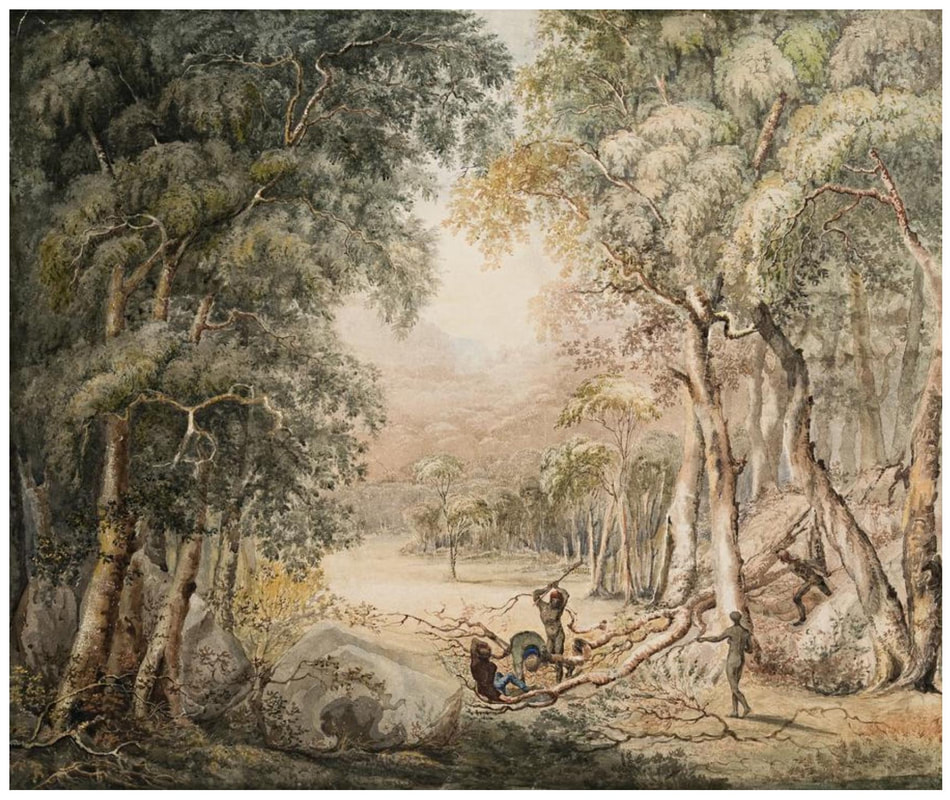 A farcical tableau crudely inserted into a woodland scene a world away from Morgan's Island.
A farcical tableau crudely inserted into a woodland scene a world away from Morgan's Island.
CATALOGUE TEXT
In 1801, at the age of nineteen, the gifted young William Westall was appointed official artist to Matthew Flinders expedition, which circumnavigated Australia in HMS Investigator during 1801-3. The scientific gentlemen on board included 'one of the greatest of all botanical draughtsmen', Ferdinand Bauer.1 Beginning at Cape Leeuwin and King George Sound in Western Australia, Westall recorded the landscape, its peoples, and exotic flora and fauna in such distant places as Port Lincoln, the Hawkesbury River and Groote Eylandt. While his direct studies are admirable in their exactness and topographical accuracy, his later watercolours and oil paintings based on them are neo-classically inclined, embellished with touches of the Picturesque, a style then in vogue in England. Moreover, he presented the Australian Aboriginal in the image of the 'Noble Savage', living in a kind of Antipodean Eden. Westall's interest in the Aborigines was such that he even recorded their cave art, the first European to do so. Generally, the expedition had good relations with the natives. Two, Boongaree and Nanbaree, accompanied Flinders on part of the circumnavigation, to help friendly intercourse with others they met. Troubles, however, were encountered in northern Australia, especially at Mud Bay, when Westall was sketching. One of their company by the name of Whitewood was speared. A native was killed, and Westall made a drawing of the body.2 Another skirmish with natives involving Westall took place at Caledon Bay in the (present) Northern Territory.
It is unlikely that this work has an exact locality. The more likely answer is that it is a 'capriccio' in an Australian setting. The trees and landscape have been given a European elegance, and the native figures have their origins more in Classical art, than in the striking realism with which Westall recorded portraits of Aboriginals from Keppel Bay to Port Jackson. The subject of the attack itself, which no doubt derives from Westall's experiences in Australia, has its in antecedents in seventeenth-century scenes of 'banditti' painted by Salvator Rosa and Gaspard Poussin. Back in London, his later oil paintings and watercolours of Australia reveal a romantic inclination in their touches of the sublime and spectacular, an engaging mixture of realism and sophisticated fantasy. This drawing nevertheless remains a work of considerable beauty and sensibility. It provides a unique view of how the country's particular individualities were seen by an early adventurer, where, to the European eye, time seemed to have stood still. Of Westall's 'wonderfully lively' drawings, Ron Radford wrote: 'They should be appreciated as extremely fine examples of the art of drawing, not just the first important historical recordings of our land. This is the prime reason we should more fully acknowledge and appreciate Westall's art.'3
1. Smith, B., Australian Painting 1788 - 1970, Oxford University Press, Melbourne, 1971, p. 8
2. Blue Mud Bay, Body of a Native shot on Morgan's Island, [1803], pencil, 15.2 x 35.0 cm, National Library of Australia, Canberra
3. Radford, R., 'William Westall and the Landscape Tradition' in Thomas, S., The Encounter, 1802, Art of the Flinders and Baudin Voyages, Art Gallery of South Australia, Adelaide, 2002, p. 114
DAVID THOMAS
Thursday, 21 January 2010
Recent William Westall Picture Discoveries
AUSTRALINA May 2008 to view images
Recent William Westall Picture Discoveries by Richard J. Westall
The most interesting new discovery is a painting which the art dealer Spinks of London had in the 1980s. It is a pencil and watercolour picture 19 3/4 x 23 5/8 ins described as An Ambush by Aborigines on two Europeans in the bush.. I was kindly provided with a negative and photograph of this painting by Anthony Spink who wanted my opinion. Although unsigned there is no doubt that this is a William Westall painting depicting the episode on January 21st, 1803 when Mr Whitewood, the master’s mate on the Investigator, was speared after his approach to Aborigines was misunderstood. This was followed by the fatal shooting of an Aborigine. Westall drew a sketch of the dead man (Westall’s Drawings 102 Blue Mud Bay : body of a native on Morgan’s island). There is every indication that the watercolour Spinks owned had probably been completed by Westall whilst on the Investigator. It is striking, not only for the scene of the attack, but for the beautifully executed drawings of the trees towering over the scene, which is totally portrayed in shades of brown.
Why was this painting never publicised? Clearly the subject matter may have caused problems. It was perfectly in order for pictures of a dead Aborigine, killed probably by master carpenter John Aken against the orders of Flinders, to be known about, but the hostility of Aborigines and their successful ambush of a European may have been an unwanted fact resulting from the expedition to Australia. It is nonetheless a very important historical painting and among Westall’s most accomplished of Australia. I am not aware of how the painting came into the possession of Spinks but members of the family were disposing of his Australian work in the 1970’s.
Apart from Australia there were brief visits to South Africa in 1801, to Timor in 1803, to China (1803/4), India (1804)(4) and a stop at St Helena (1804). Following his return to England in 1805 Westall visited Madeira (1805), where the Investigator had called in 1801 and Jamaica (1806).
This tension between Westall’s need to be accurate and his notion of the picturesque is at the heart of his Australian work. It is clearest in his oil paintings which were for the Royal Academy as well as the Admiralty. For Jeffrey Auerbach (19) they are “especially important because they are so clearly at odds with his written description” of Australia as being a “barren land”. Through “picturesque devices” he conveyed an impression of Australia which defied his own opinion.
Recent William Westall Picture Discoveries
AUSTRALINA May 2008 to view images
Recent William Westall Picture Discoveries by Richard J. Westall
The most interesting new discovery is a painting which the art dealer Spinks of London had in the 1980s. It is a pencil and watercolour picture 19 3/4 x 23 5/8 ins described as An Ambush by Aborigines on two Europeans in the bush.. I was kindly provided with a negative and photograph of this painting by Anthony Spink who wanted my opinion. Although unsigned there is no doubt that this is a William Westall painting depicting the episode on January 21st, 1803 when Mr Whitewood, the master’s mate on the Investigator, was speared after his approach to Aborigines was misunderstood. This was followed by the fatal shooting of an Aborigine. Westall drew a sketch of the dead man (Westall’s Drawings 102 Blue Mud Bay : body of a native on Morgan’s island). There is every indication that the watercolour Spinks owned had probably been completed by Westall whilst on the Investigator. It is striking, not only for the scene of the attack, but for the beautifully executed drawings of the trees towering over the scene, which is totally portrayed in shades of brown.
Why was this painting never publicised? Clearly the subject matter may have caused problems. It was perfectly in order for pictures of a dead Aborigine, killed probably by master carpenter John Aken against the orders of Flinders, to be known about, but the hostility of Aborigines and their successful ambush of a European may have been an unwanted fact resulting from the expedition to Australia. It is nonetheless a very important historical painting and among Westall’s most accomplished of Australia. I am not aware of how the painting came into the possession of Spinks but members of the family were disposing of his Australian work in the 1970’s.
Apart from Australia there were brief visits to South Africa in 1801, to Timor in 1803, to China (1803/4), India (1804)(4) and a stop at St Helena (1804). Following his return to England in 1805 Westall visited Madeira (1805), where the Investigator had called in 1801 and Jamaica (1806).
This tension between Westall’s need to be accurate and his notion of the picturesque is at the heart of his Australian work. It is clearest in his oil paintings which were for the Royal Academy as well as the Admiralty. For Jeffrey Auerbach (19) they are “especially important because they are so clearly at odds with his written description” of Australia as being a “barren land”. Through “picturesque devices” he conveyed an impression of Australia which defied his own opinion.
Mr Richard Westall is naturally anxious to make discoveries, like his august ancestor, but he lacks a familiarity with either the landscape or climate of East Arnhem Land. His namesake and brother of William Westall was also a most accomplished artist and was a long time tutor of Queen Victoria.
Additional Westall images
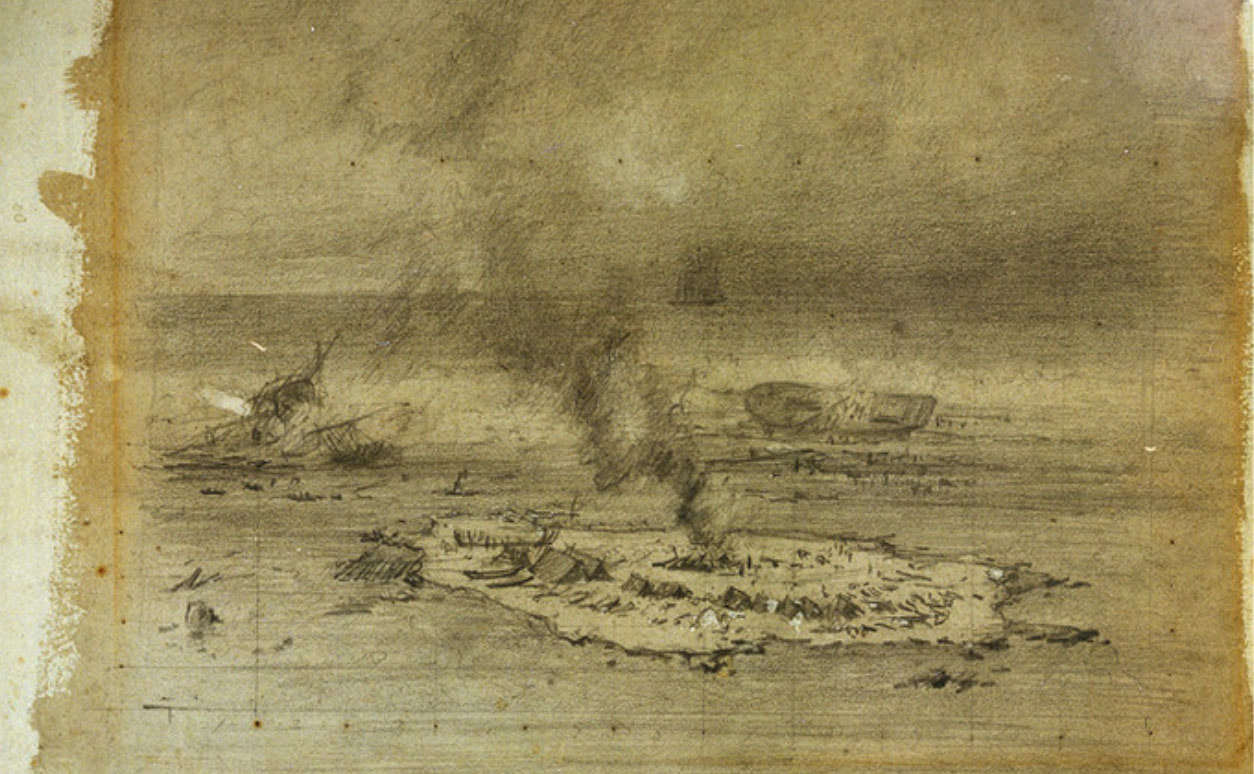
Wreck Reef by William Westall - the grave of the Cato and HMS Porpoise aboard which Flinders and party had taken passage due to unseaworthiness of Investigator -which would carry Westall home in 1805 whilst Flinders languished at Mauritius. Flinders raised the alarm by taking to Sydney one of the boats renamed the Hope - the similarly epic voyage from Escape Cliffs was in the Forlorn Hope.
Works in The Queen's House, Greenwich
|
Baxter was familiar with Westall's work and the Flinders voyage. He probably attended the hugely popular exhibitions but needed only to visit The Queen's House to find the elements & animals to populate his pastiche.
|
Later Works
Curiosities
The 70lb mouse
This kangaroo was seen at Endeavour River on 23 June 1770 - Parkinson died on Endeavour before returning to England where the copper plate was later inscribed. The 'page 577, Vol 3 plate No. 20 refers to Hawkesworth, J. An Account of voyages undertaken by order of Her Present Majesty etc. 1773.
